- Absolutely massive inside
- Fully loaded with standard equipment
- Excellent ride quality
- Petrol V6 is very thirsty
- Front-wheel drive layout scary in the wet
- Price rises mean that it's expensive
You may not know it but Hyundai’s huge eight-seat Palisade SUV was treated to a mid-life update. The exterior was lightly restyled, its model lineup changed and a lot of equipment was added, including some pieces of safety kit which helped to increase its ANCAP rating to the maximum five stars. Predictably, price rises also followed to match the increase in equipment, but Hyundai says that the Palisade is an even better all-rounder than before. We tested the 2023 Hyundai Palisade Highlander V6 to find out.
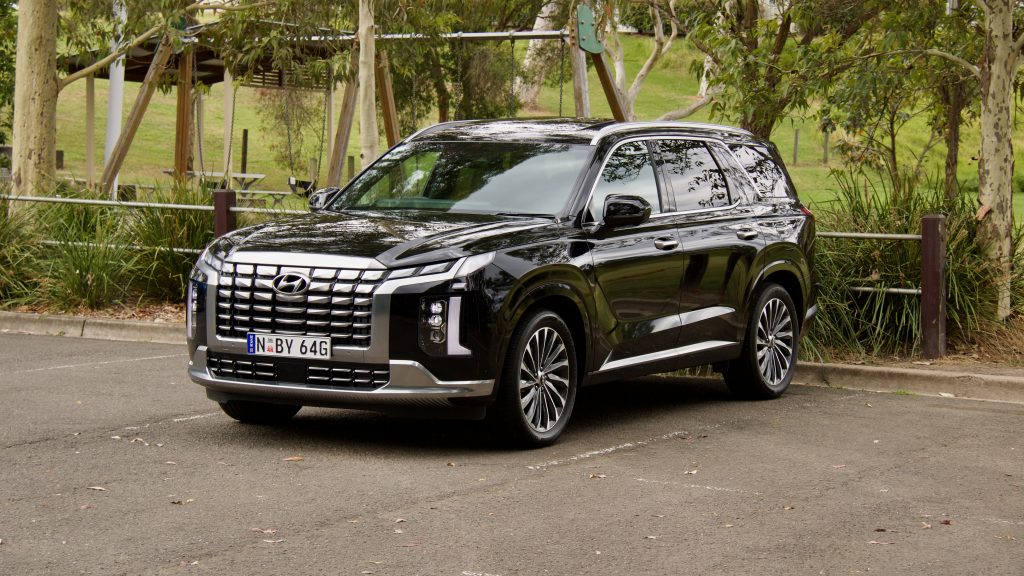
The Palisade competes in the sub-$70,000 large SUV category according VFACTS, and it fights everything from the Subaru Outback to the Ford Everest. So far in 2022, it’s sitting on 3.4 per cent market share, which is respectable considering how many cars it competes with. But our question is simple: with such tough competition – like the Mazda CX-9, Toyota Kluger and new Nissan Pathfinder, to name a few – what does the Palisade offer? Let’s find out.
Price & Equipment: 8/10
Currently there are two models available in the Palisade range: the entry-level Elite (priced from $65,900 plus on-road costs) and the top-spec Highlander that we tested here, which is priced from $75,900 plus on-road costs (around $82,500 drive away). The Palisade is available in both seven- and eight-seat forms – choosing the latter doesn’t add to the cost – with our test car featuring eight seats.
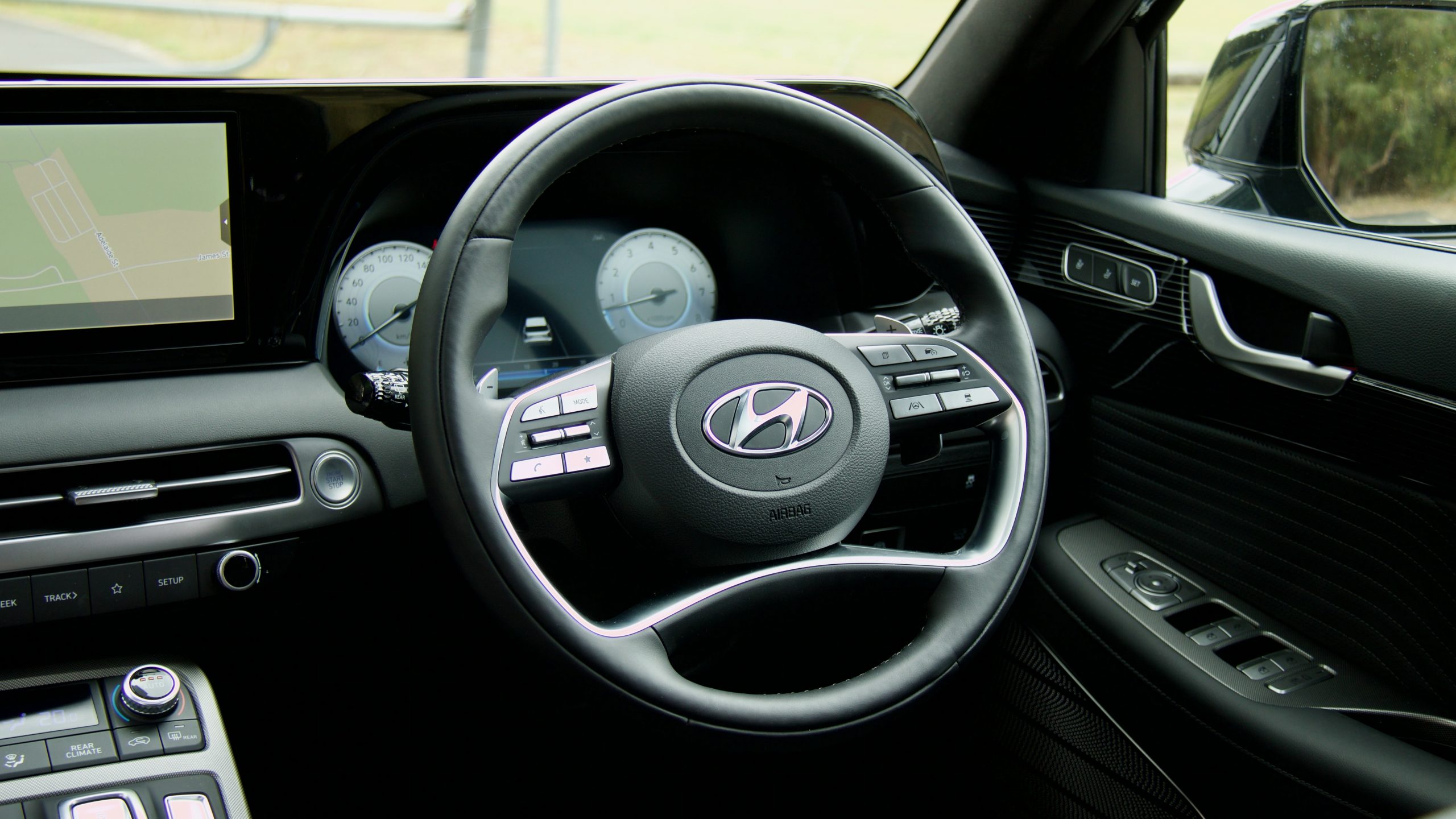
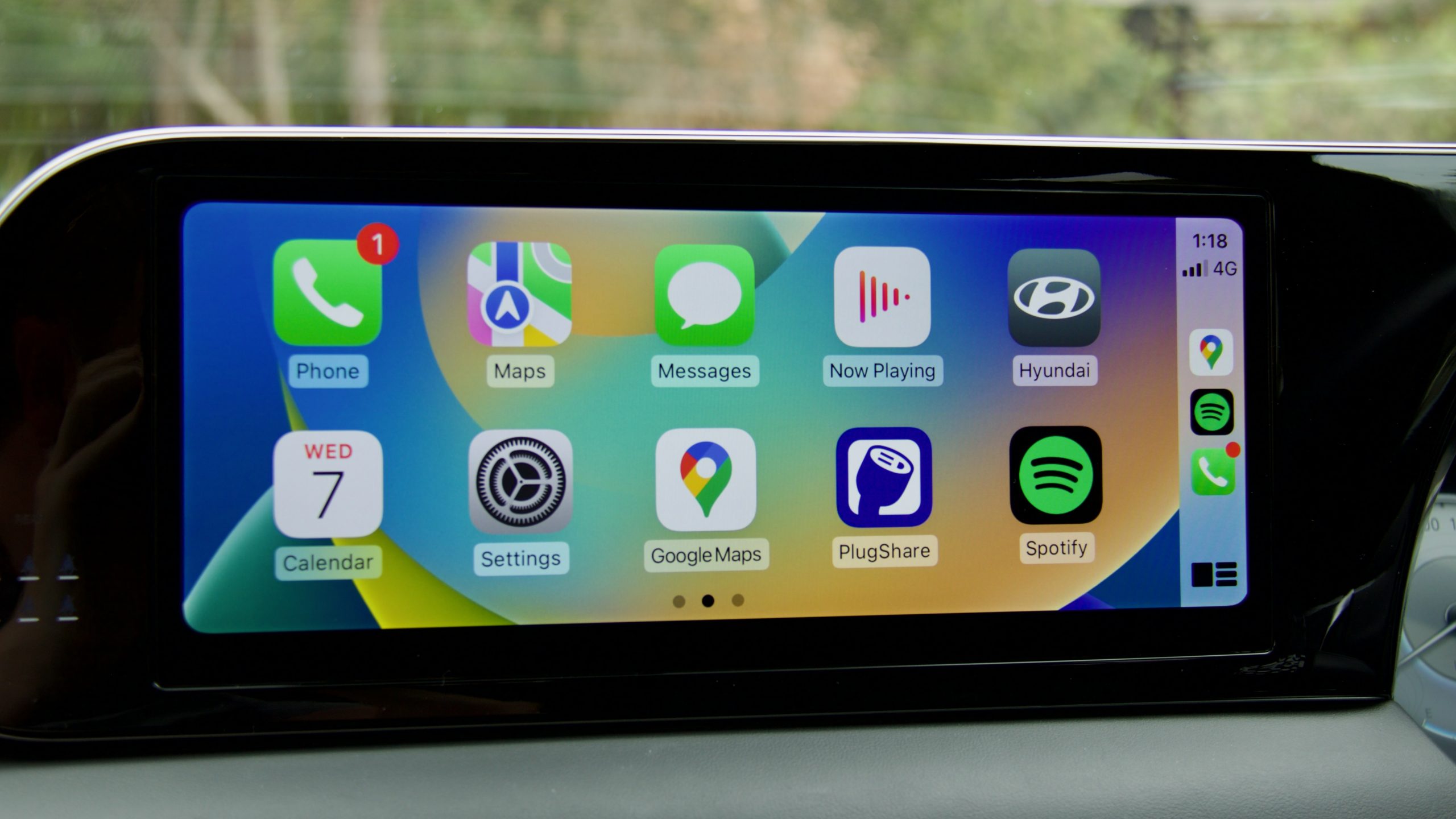
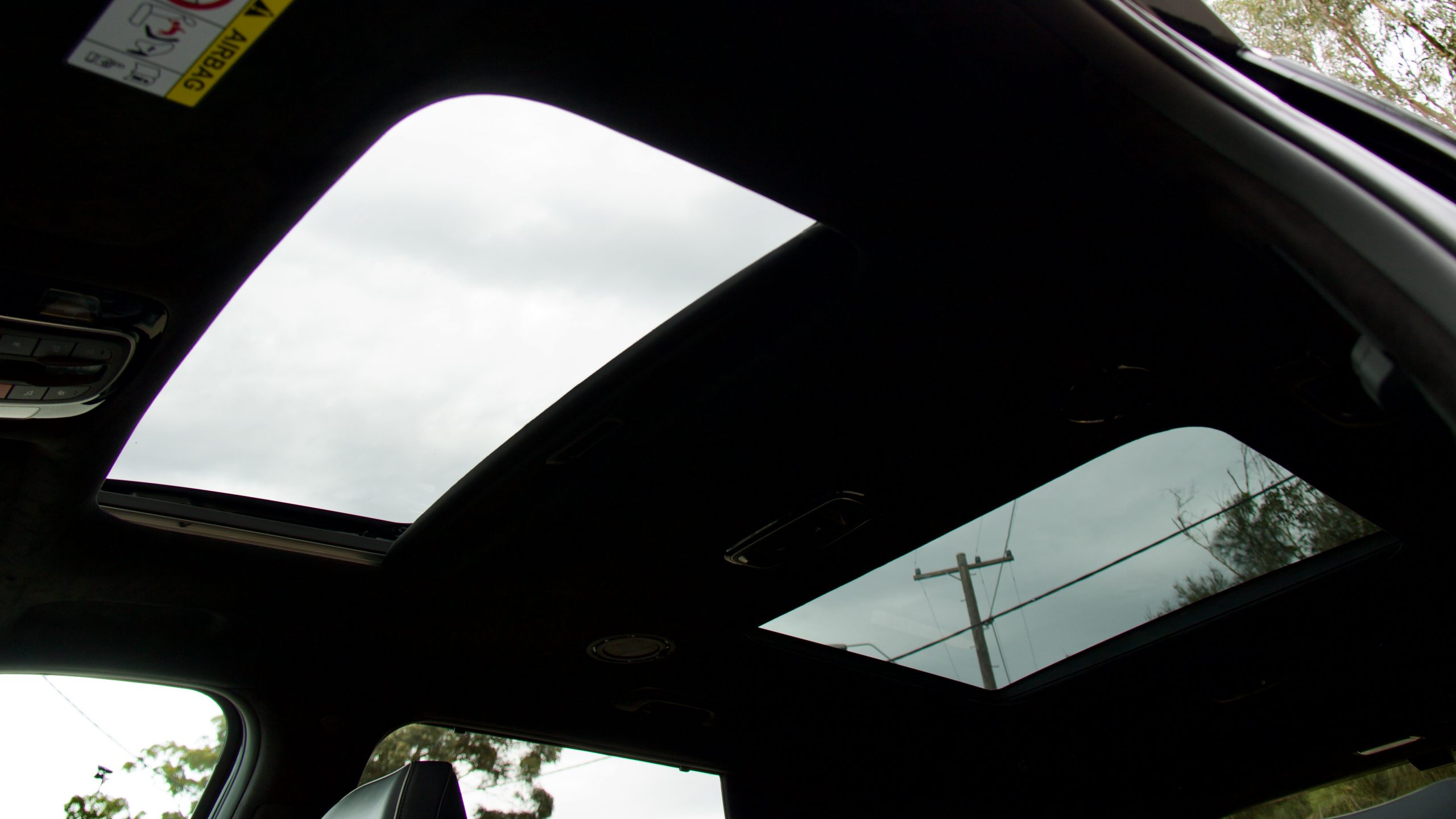
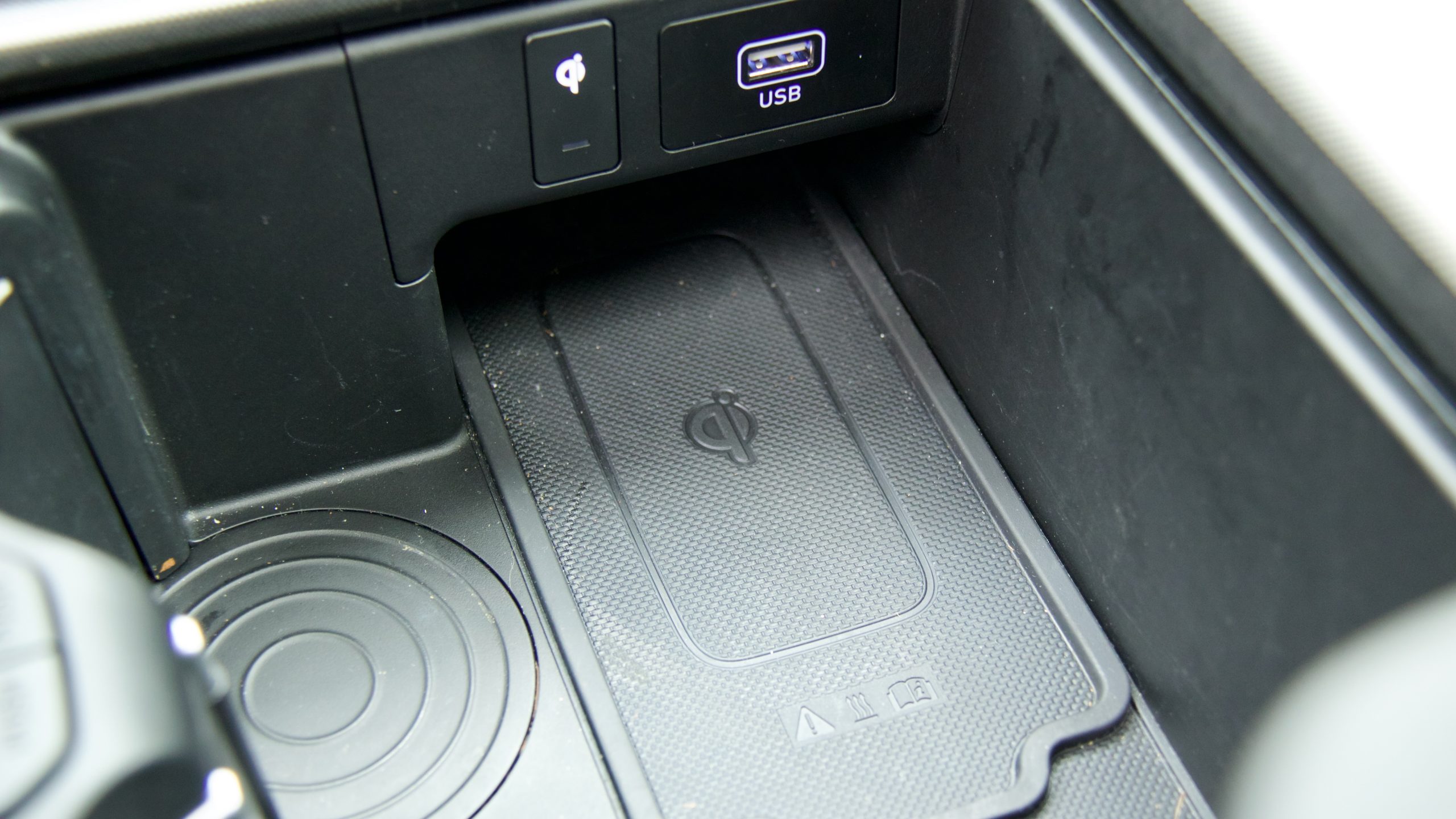
Standard kit on the Highlander includes 20-inch alloy wheels, automatic all-LED lighting, auto wipers, roof rails, dual sunroofs, 12-way driver/8-way passenger electrically adjustable front seats with driver’s memory, Nappa leather upholstery with heated and ventilated front seats, a heated steering wheel, heated and ventilated outboard middle row seats, tri-zone climate control with vents in all rows, keyless entry and start, remote start with remote parking functionality, an electric tailgate with hands-free access, rear privacy class, manual sunshades in the second row, a 12.3-inch touchscreen with a 12.3-inch digital driver’s display, wired Apple CarPlay and Android Auto, digital radio, an inbuilt SIM for access to features like weather and live traffic, multiple driving modes, Hyundai’s BlueLink smartphone app for access to some of the car’s features, a 12-speaker Infinity sound system and heated/auto-folding/auto-dropping mirrors.
Safety equipment includes seven airbags (including a new front centre unit), auto emergency braking (AEB) with pedestrian, cyclist and intersection assist, lane keep assist with lane departure warning, lane trace assist, adaptive cruise control with stop and go functionality, blind-spot monitoring with rear cross-traffic alert (both with braking), blind-spot cameras, auto high beam, traffic sign recognition with intelligent speed limit assist, traffic sign recognition, rear occupant alert, safe exit assist, a 10-inch heads-up display, a digital rear mirror, a 360-degree camera and front and rear parking sensors. The Palisade has a five-star ANCAP rating.
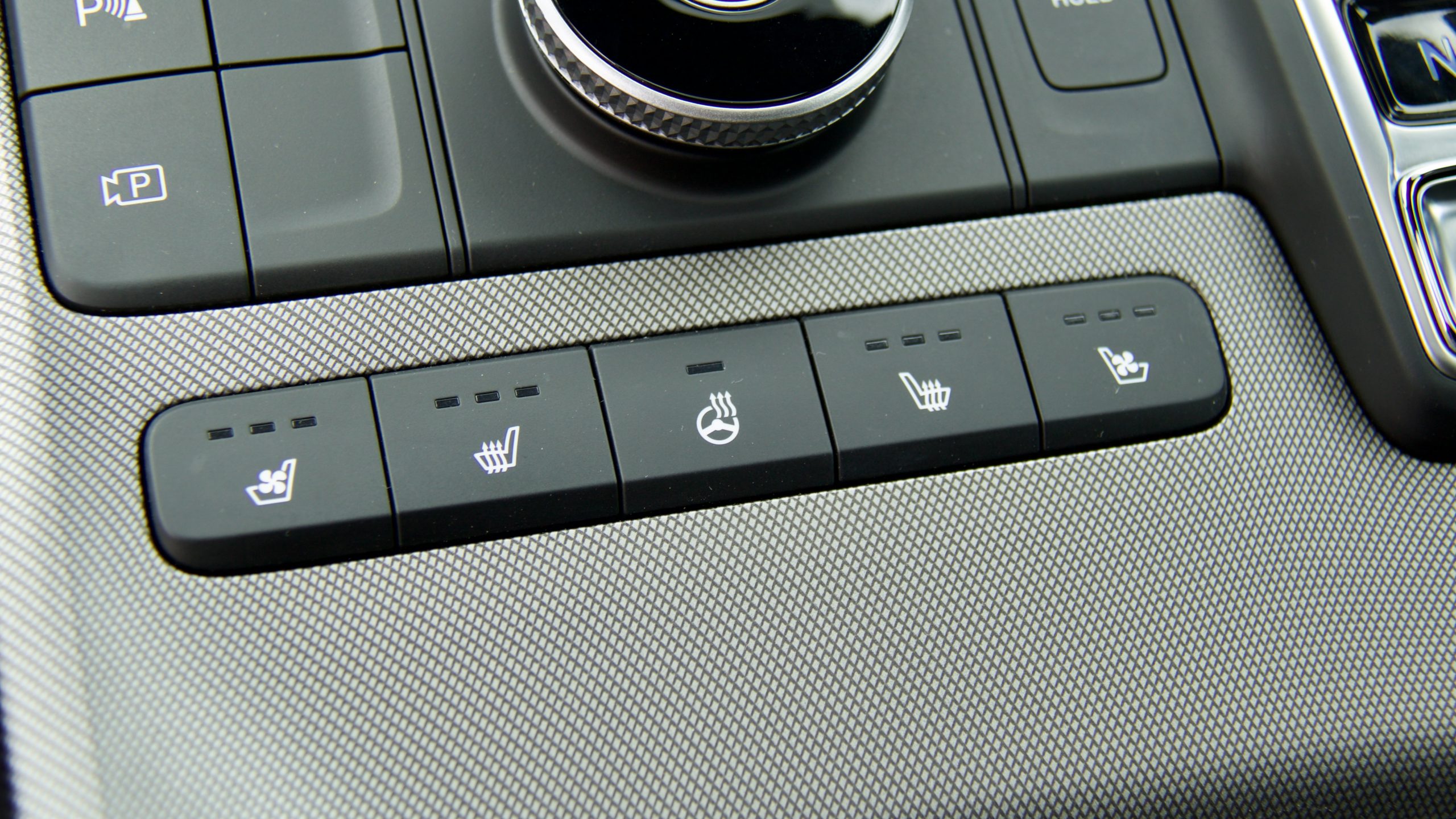
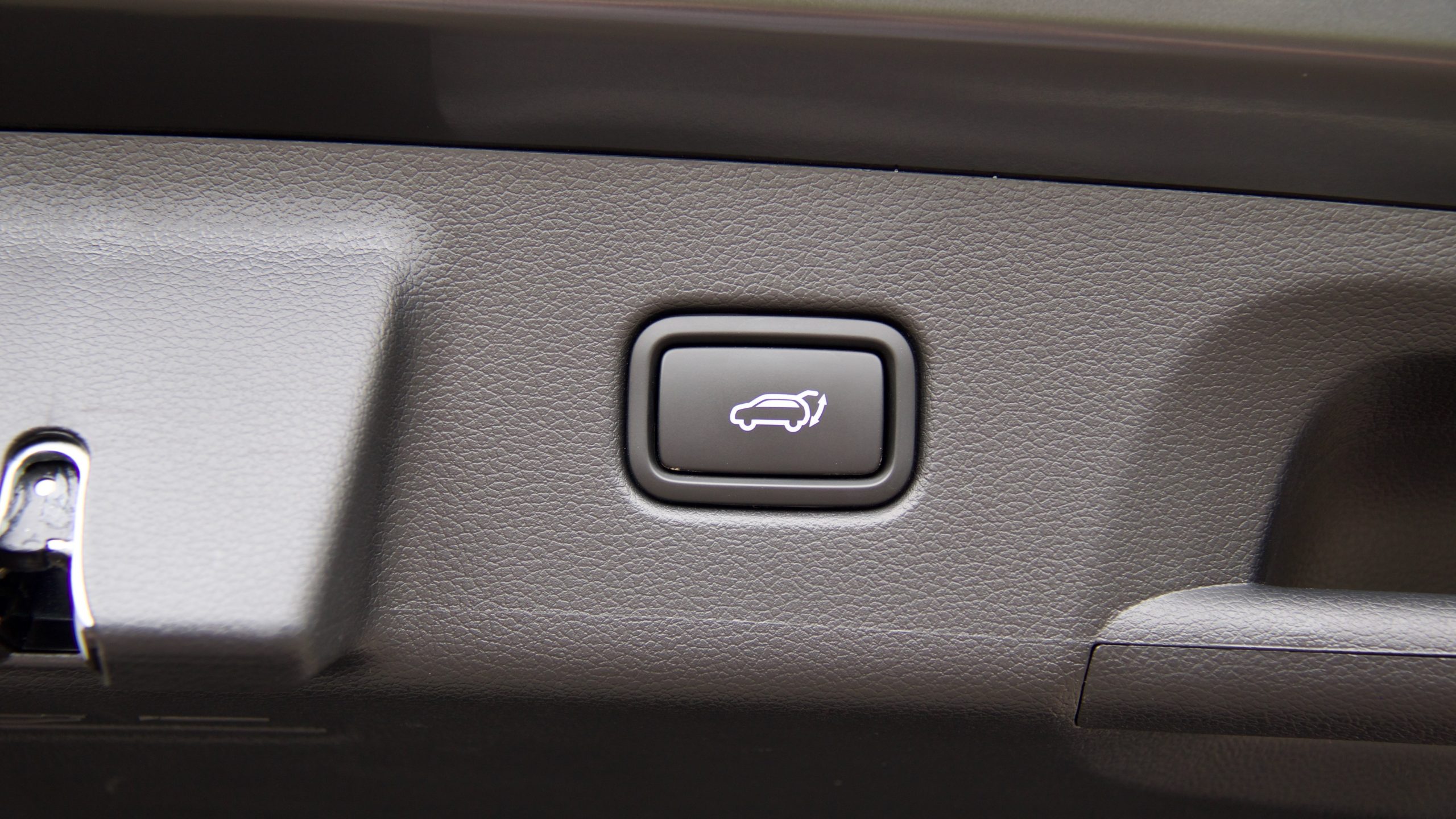
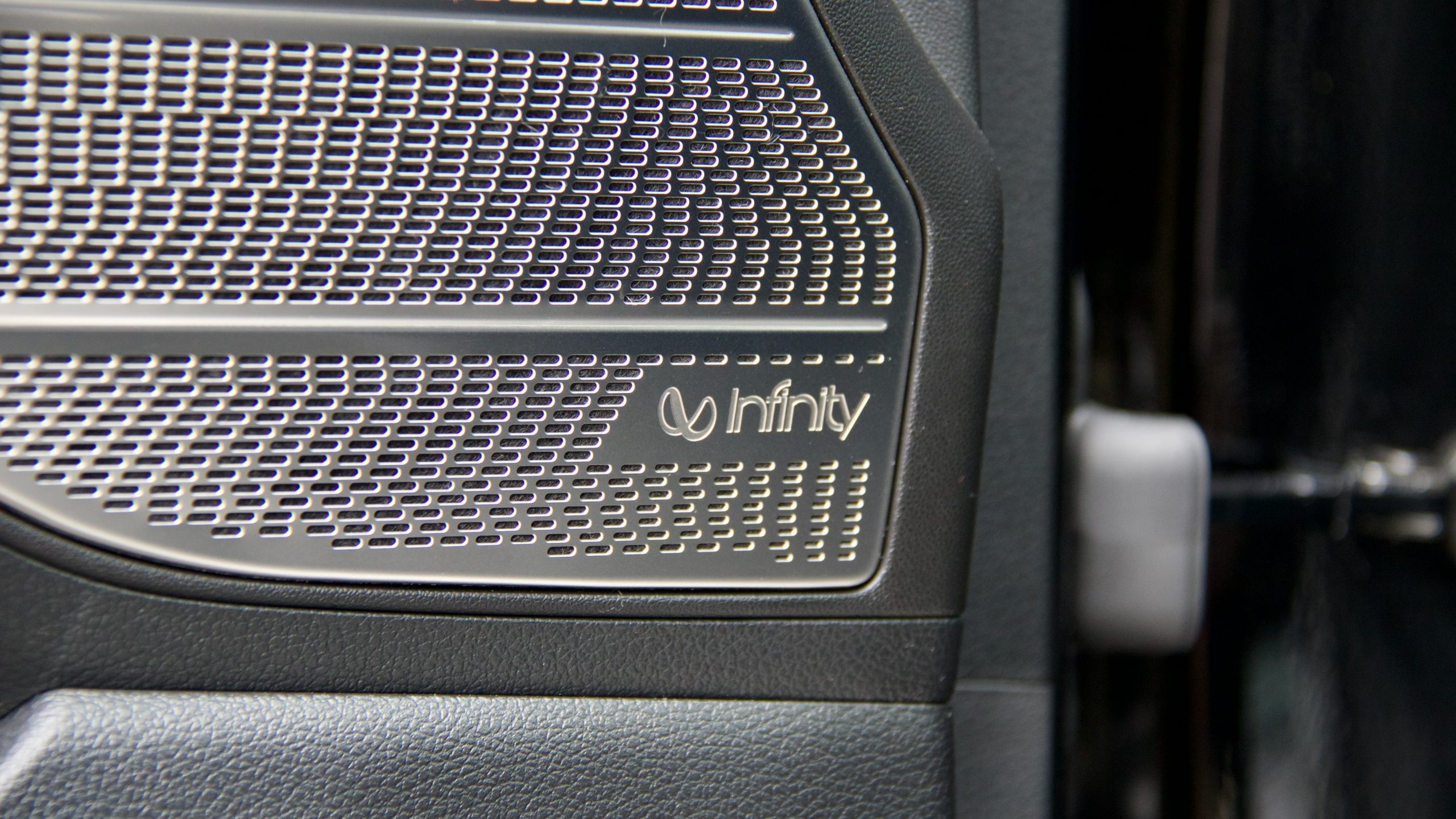
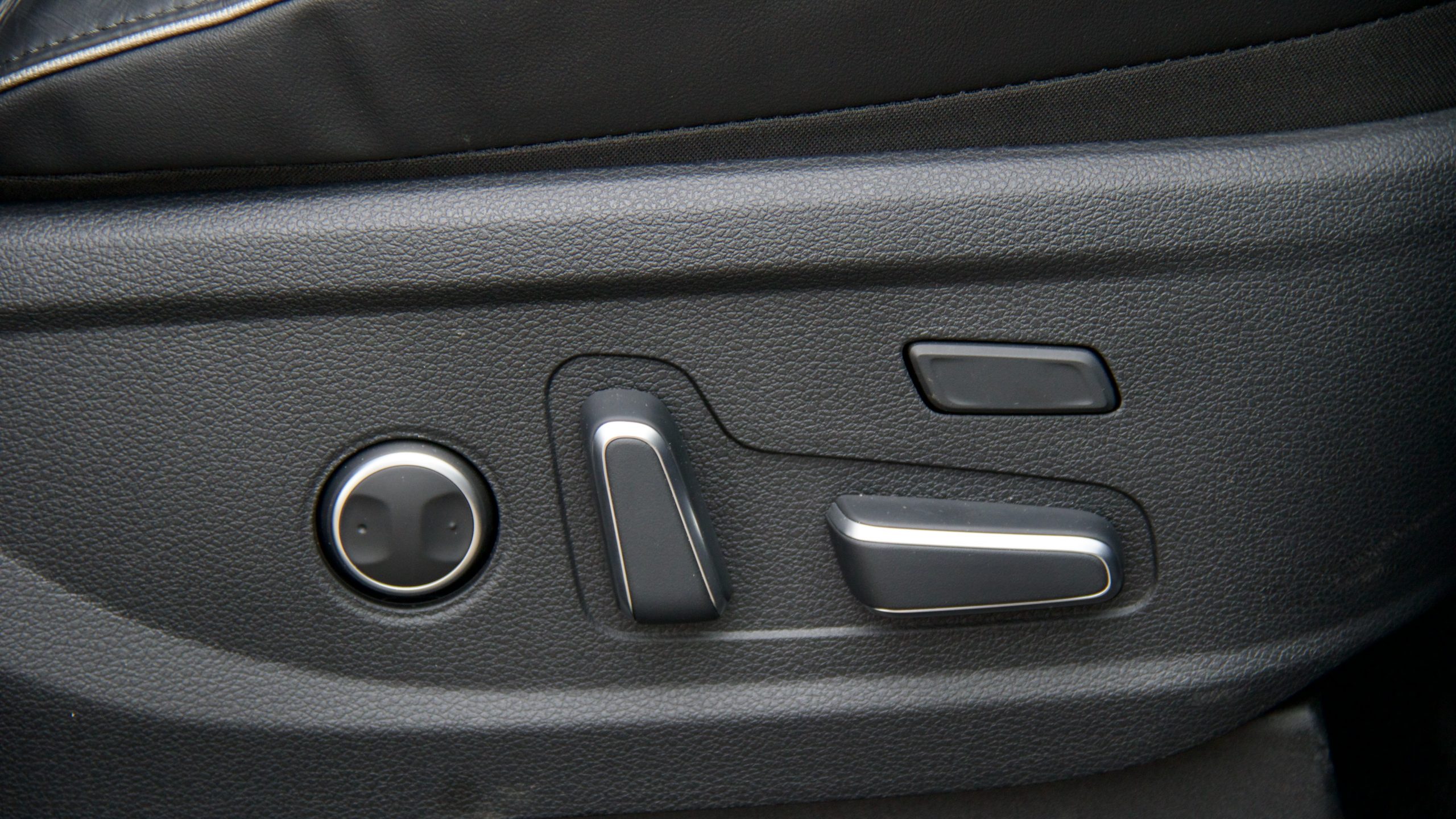
There are nine colours available for the Palisade Highlander: the no-cost ‘Creamy White’, as well as the $695-extra ‘Graphite Grey’, ‘Robust Emerald’, ‘Olivine Grey’, ‘Gaia Brown’, ‘Shimmering Silver’, ‘Sierra Burgundy’, ‘Moonlight Blue’ and our test car’s ‘Abyss Black’. Black leather upholstery is standard, while blue and grey is available on ‘Moonlight Blue’ and ‘Graphite Grey’ and black and black and grey is available with most exterior colour options too.
So given the Palisade isn’t cheap, why score it a respectable 8/10 for price and equipment? Well, as you can probably tell, it’s absolutely loaded with standard equipment – aside from wireless smartphone mirroring and Matrix headlights, there isn’t much that it misses out on. There’s also the Palisade’s competitor list – cars like the Mazda CX-9 Azami (priced from around $74,000 drive away) and Toyota Kluger Grande (around $76,000 drive away) – which are less expensive yes, but they’re also smaller and feature less standard equipment.
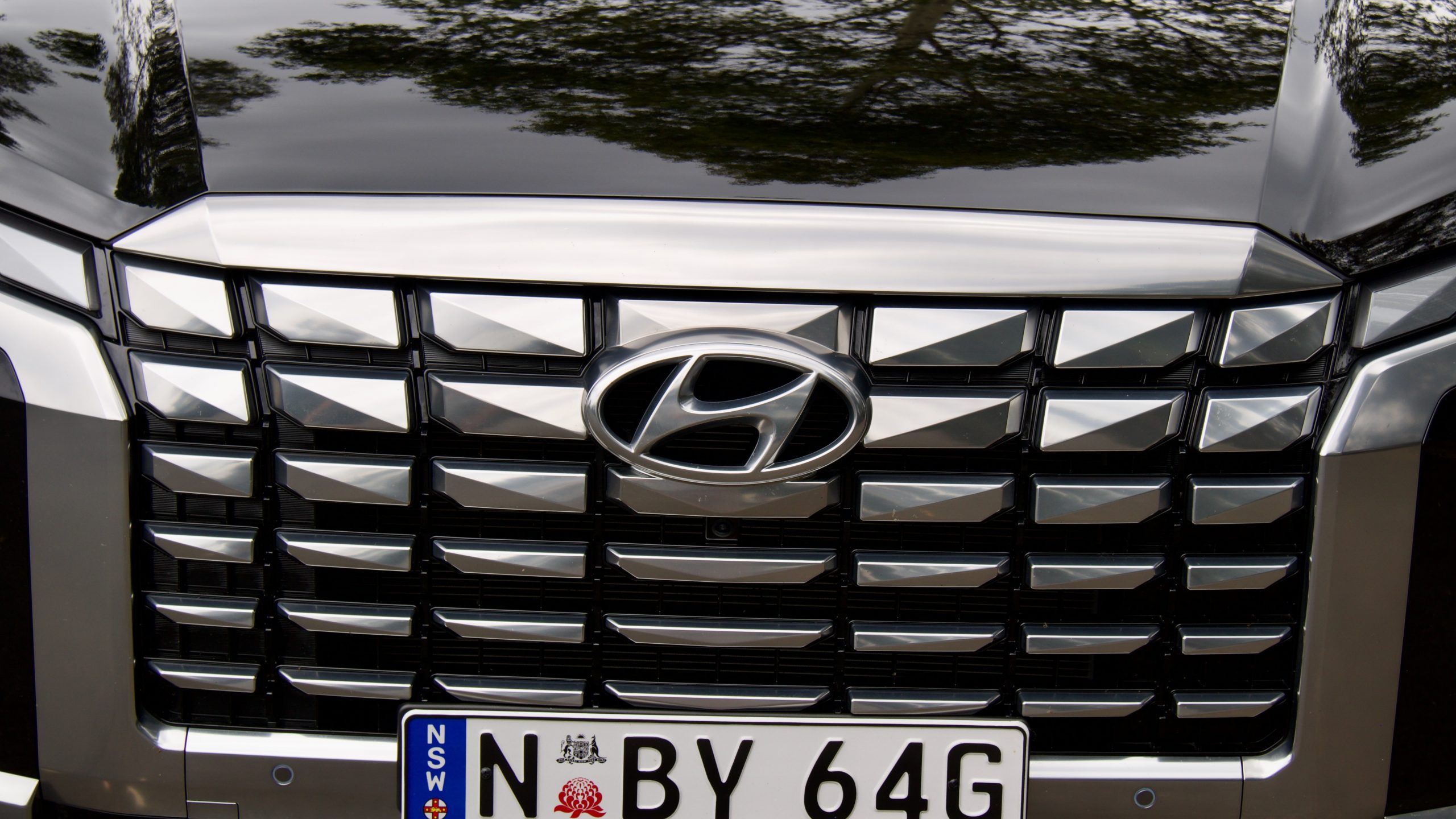
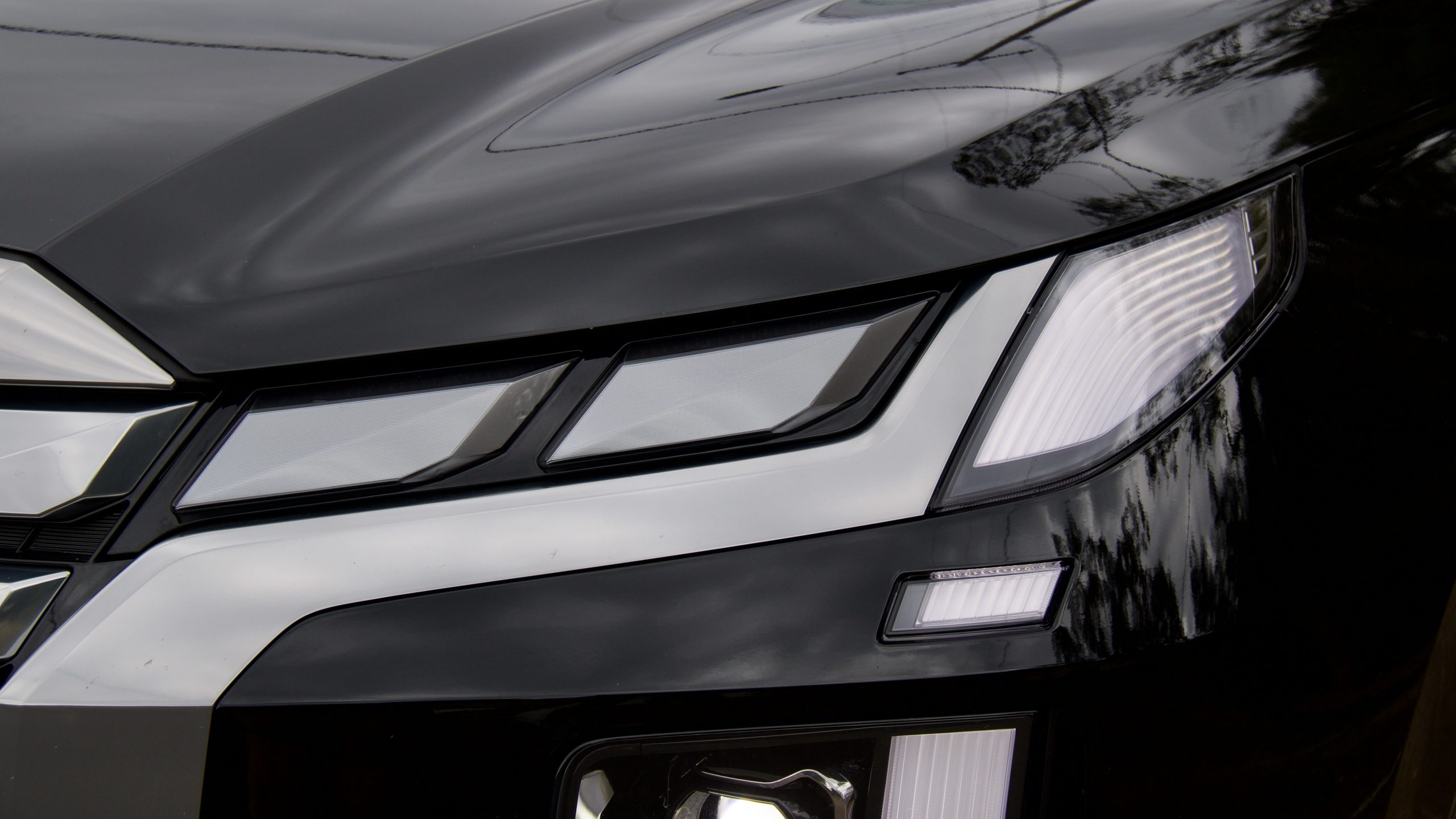
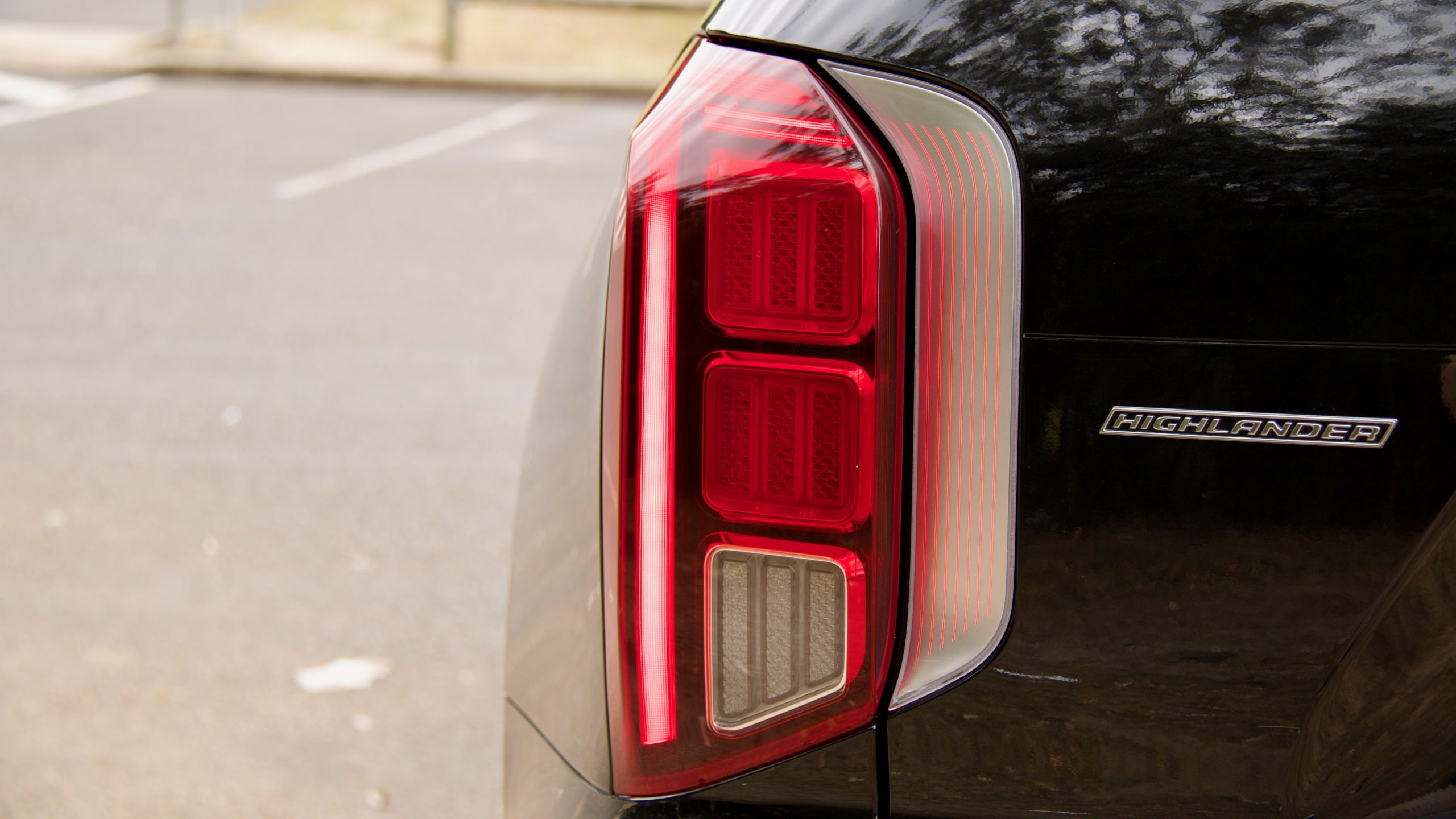
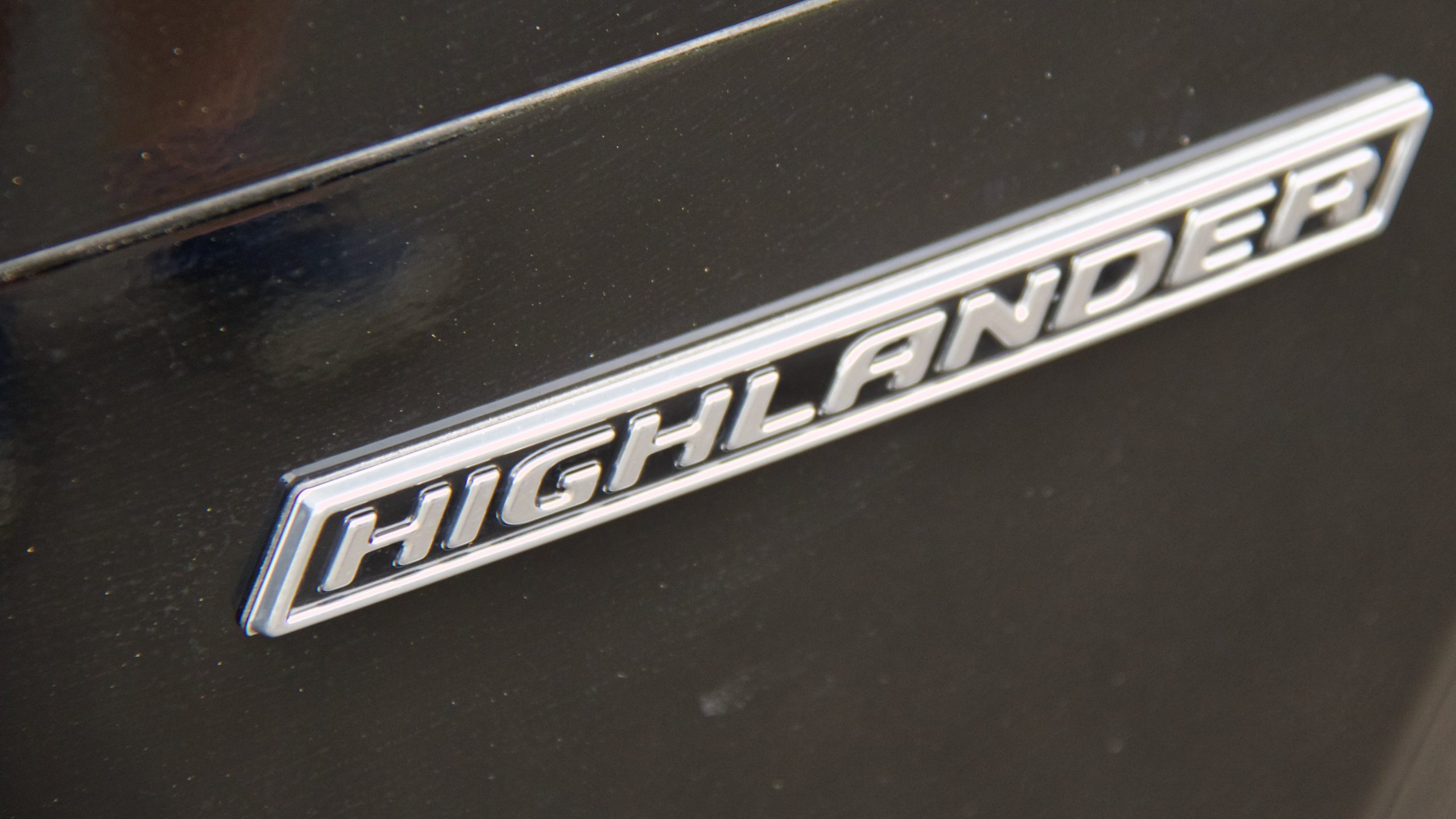
To get the same sort of size as the Palisade (but only seven seats), you need to step up into the Volvo XC90, which starts at around $102,000 drive away. But to spec it to the Palisade’s level, you’re looking at almost $110,000 drive away, which makes the Palisade’s value equation even better.
Performance & Economy: 7/10
Under the bonnet of the 2023 Hyundai Palisade Highlander V6 is a 3.8-litre petrol V6 engine that makes 217kW of power (at 6,000rpm) and 355Nm of torque (at 5,200rpm). It’s mated to an eight-speed torque converter automatic transmission and it’s only available in front-wheel drive form in Australia – choosing the optional turbo-diesel adds an all-wheel drive system that we think should be optional for the V6 as well.
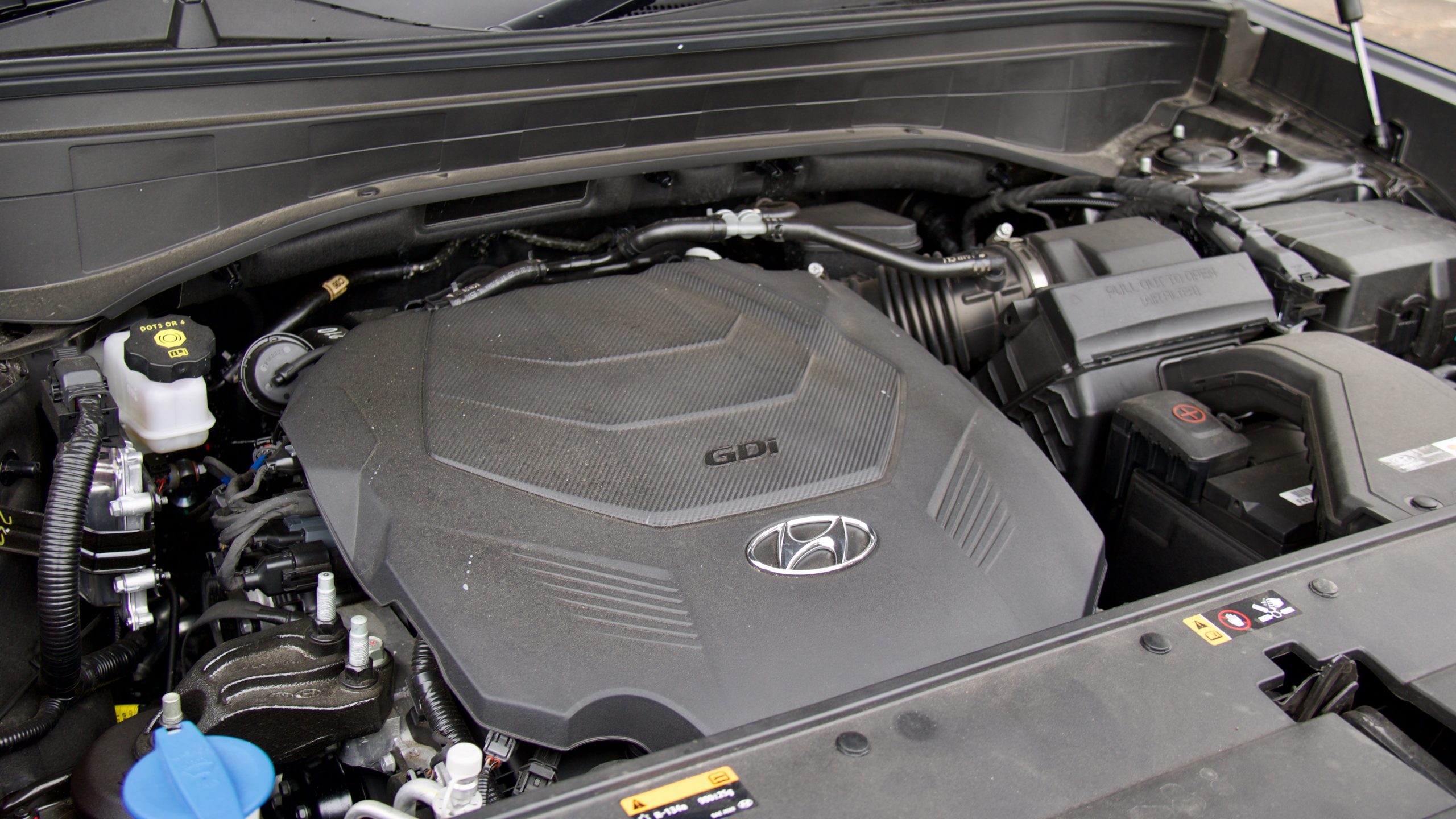
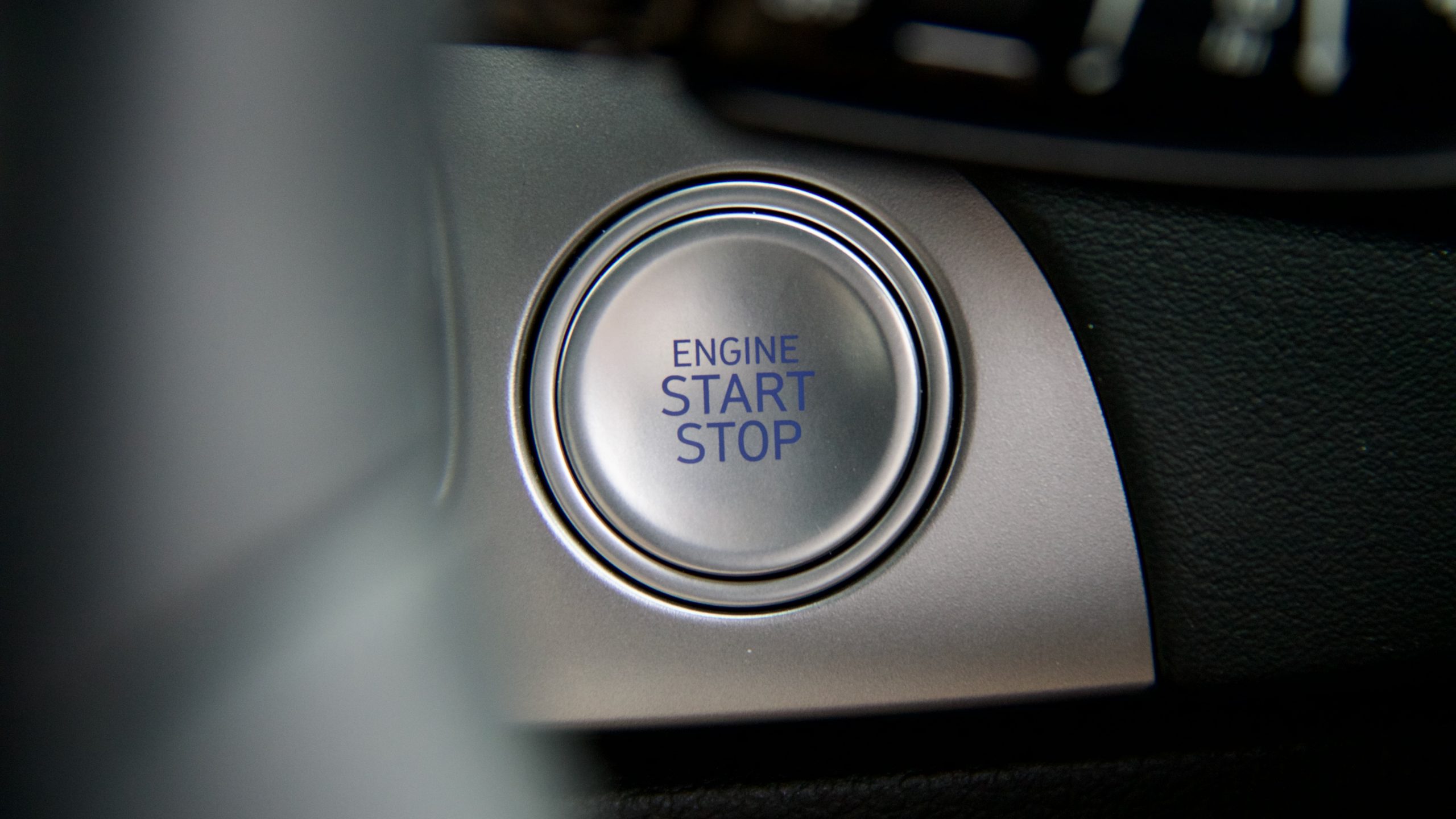
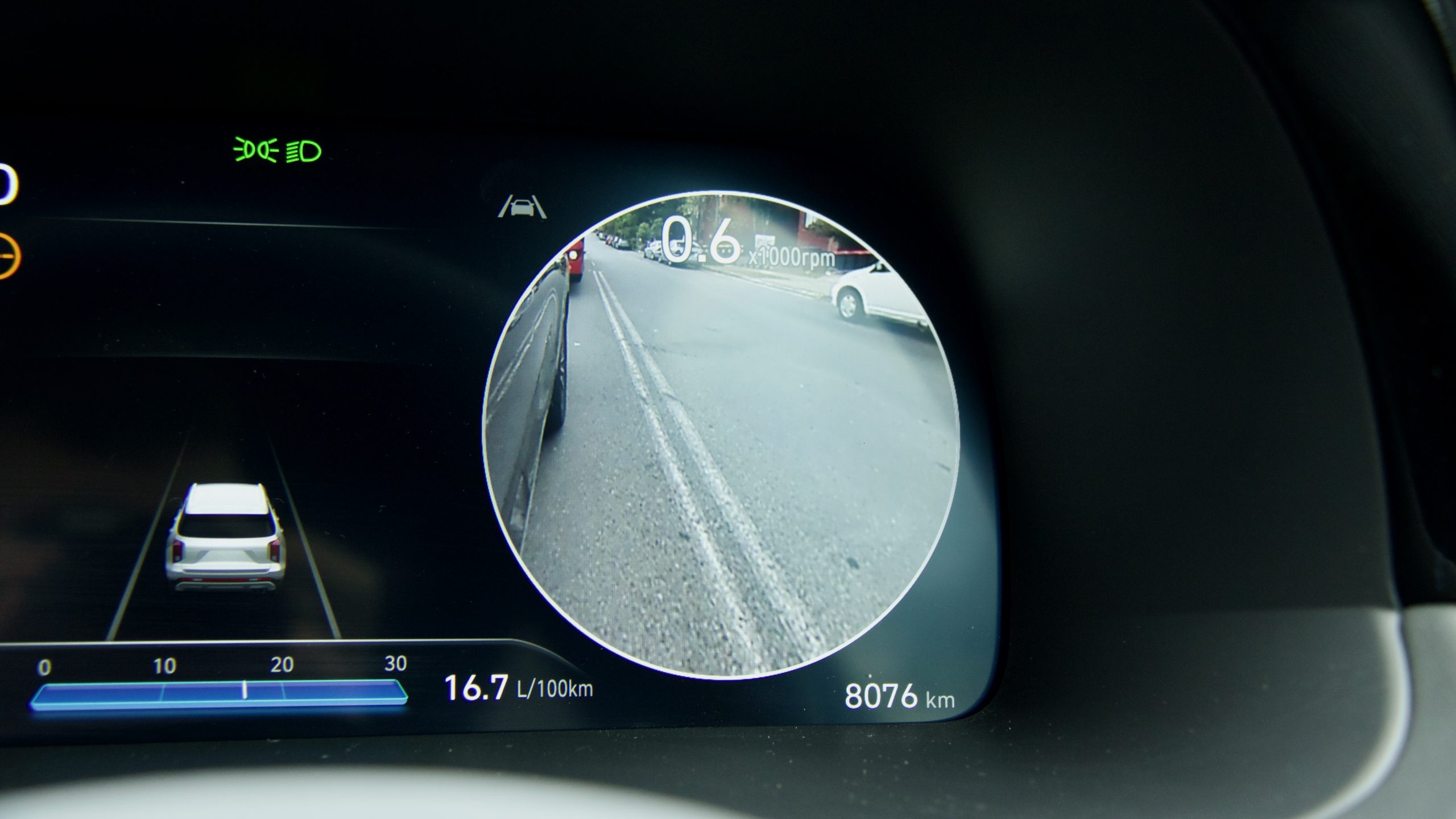
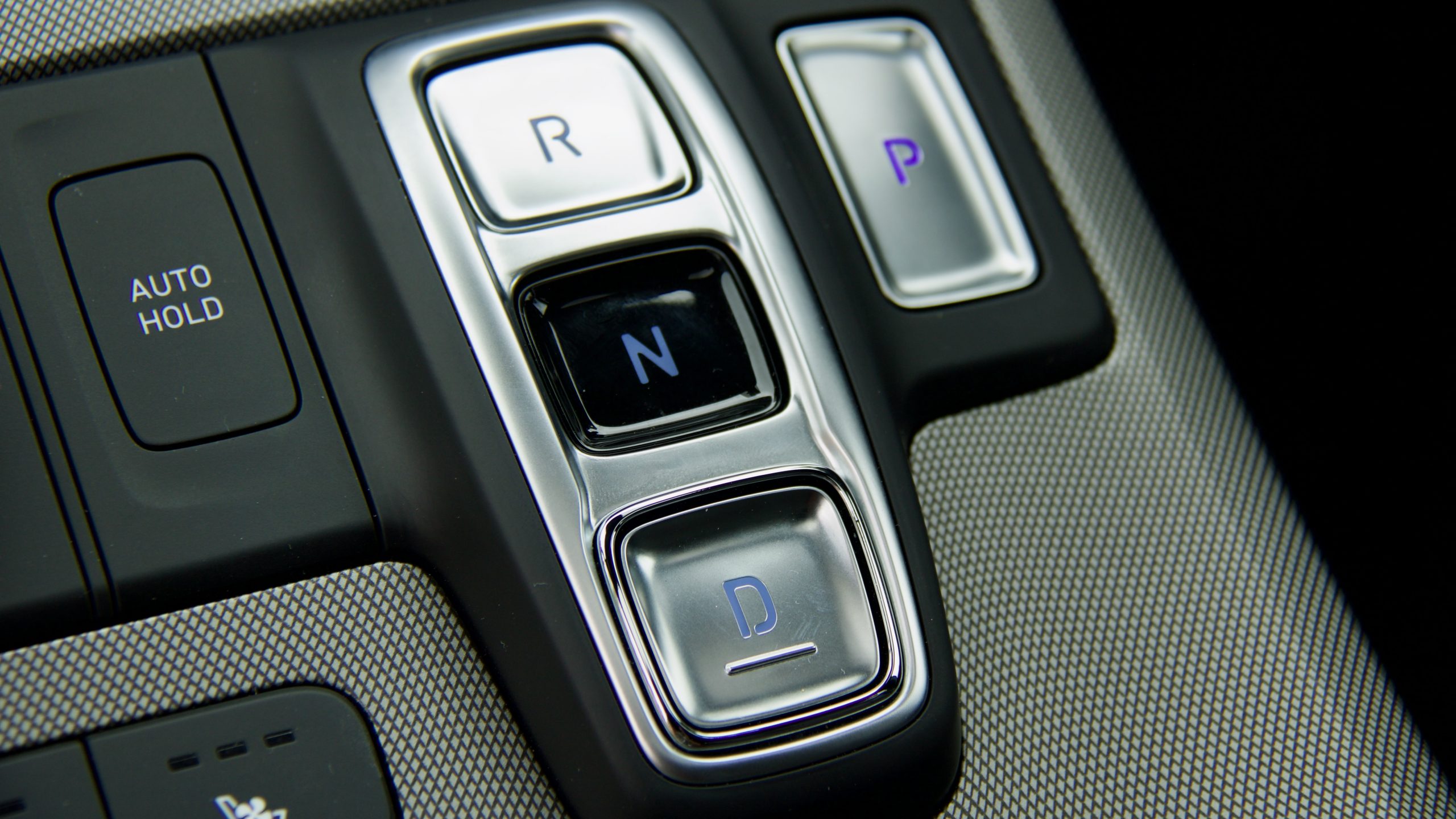
The V6 engine in the Palisade sounds great, and when you’re flooring it, the engine feels quick (the claimed 0-100km/h time is 7.8 seconds). The problem is that its peak torque hits high in the rev range, which means that you have to rev it to get the most out of, which further increases the fuel consumption. The lack of all-wheel drive system hurts, with the two-wheel drive setup suffering wheelspin, even from tiny throttle inputs.
The eight-speed automatic transmission is excellent. It’s intuitive, responsive – despite the engine’s high peak torque development spot – and is generally creamy smooth. The only sore point we have with it are the shift buttons themselves – they can be cumbersome in hurried three-point turns and can take a few presses.
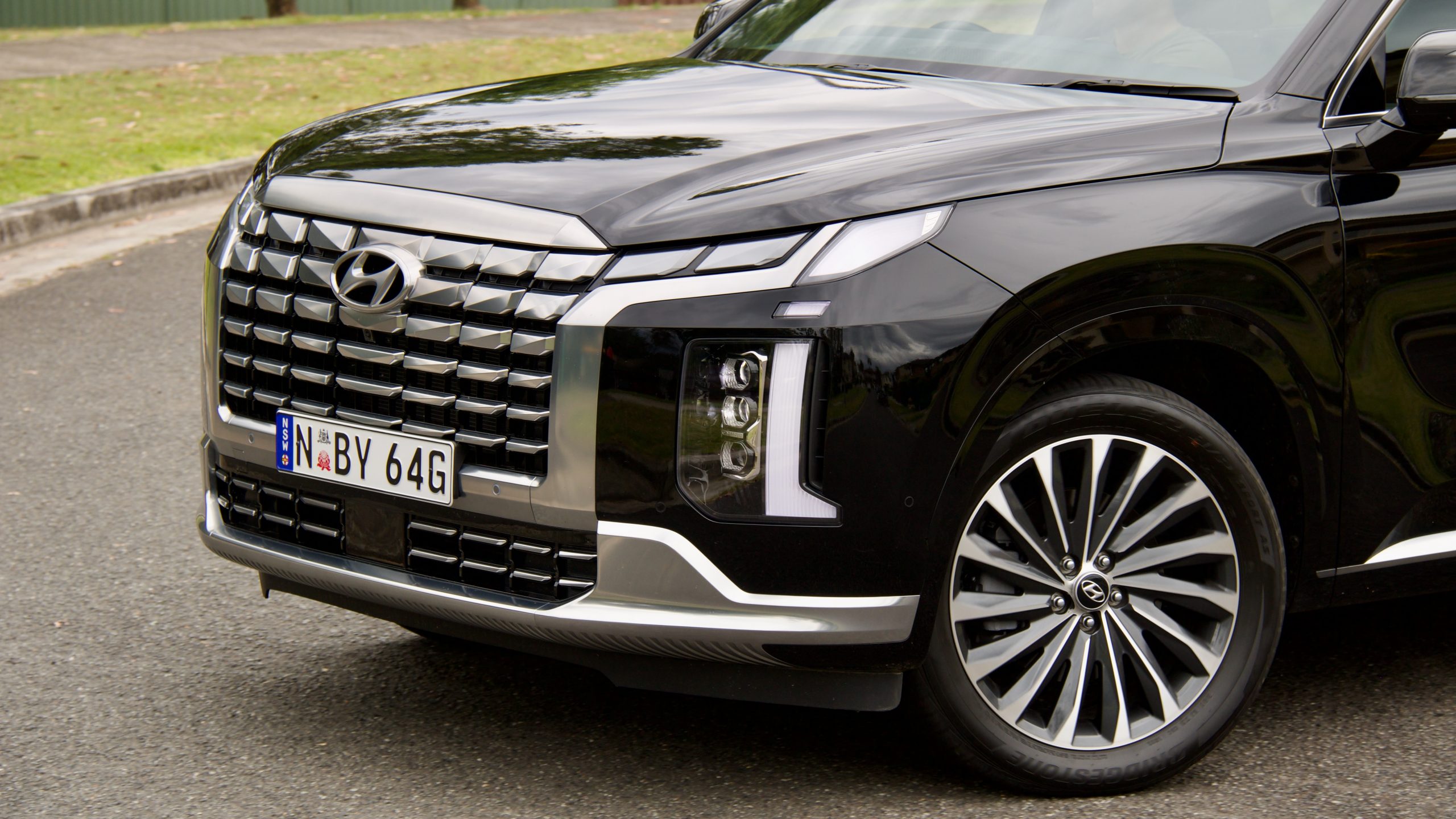
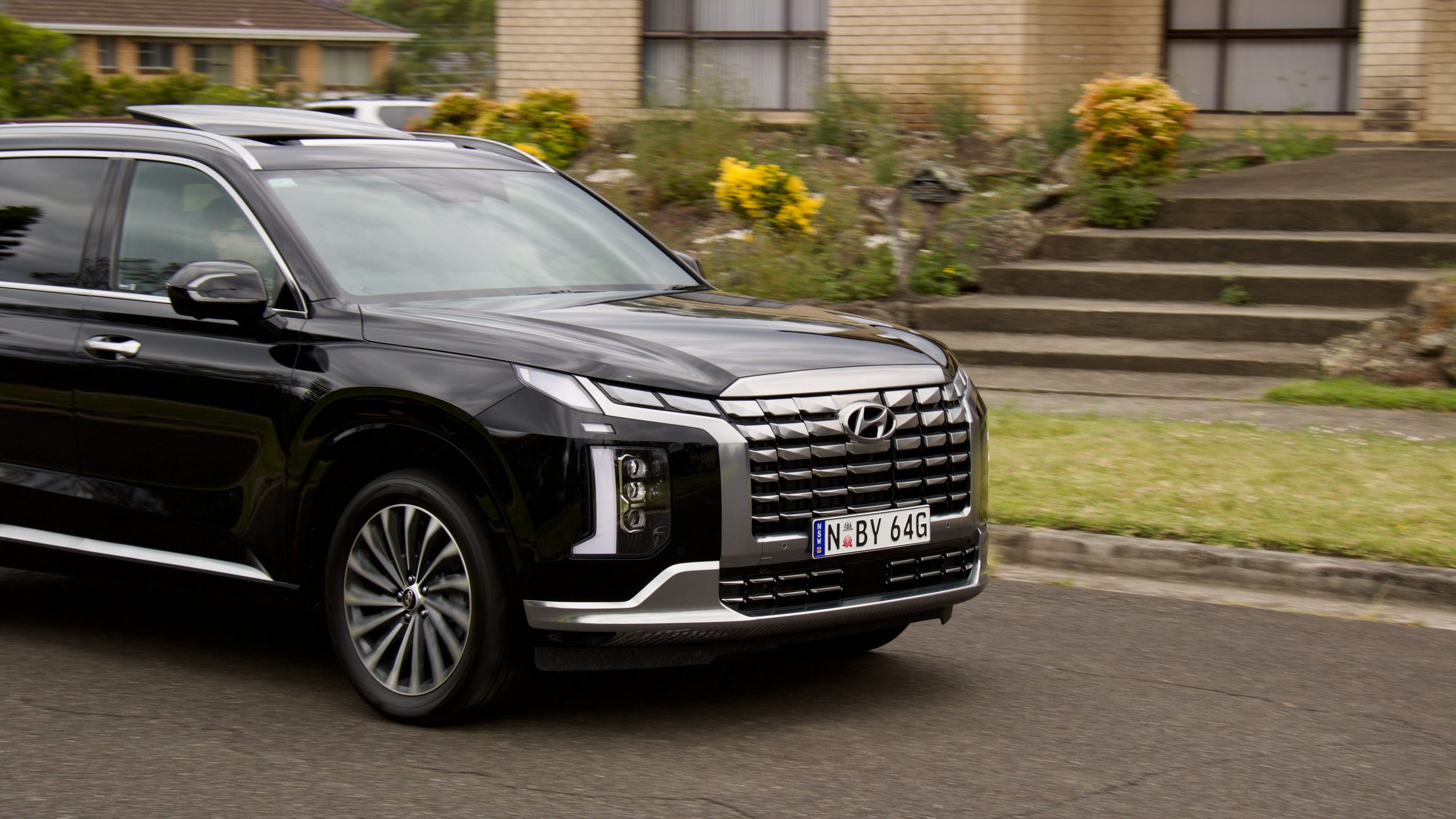
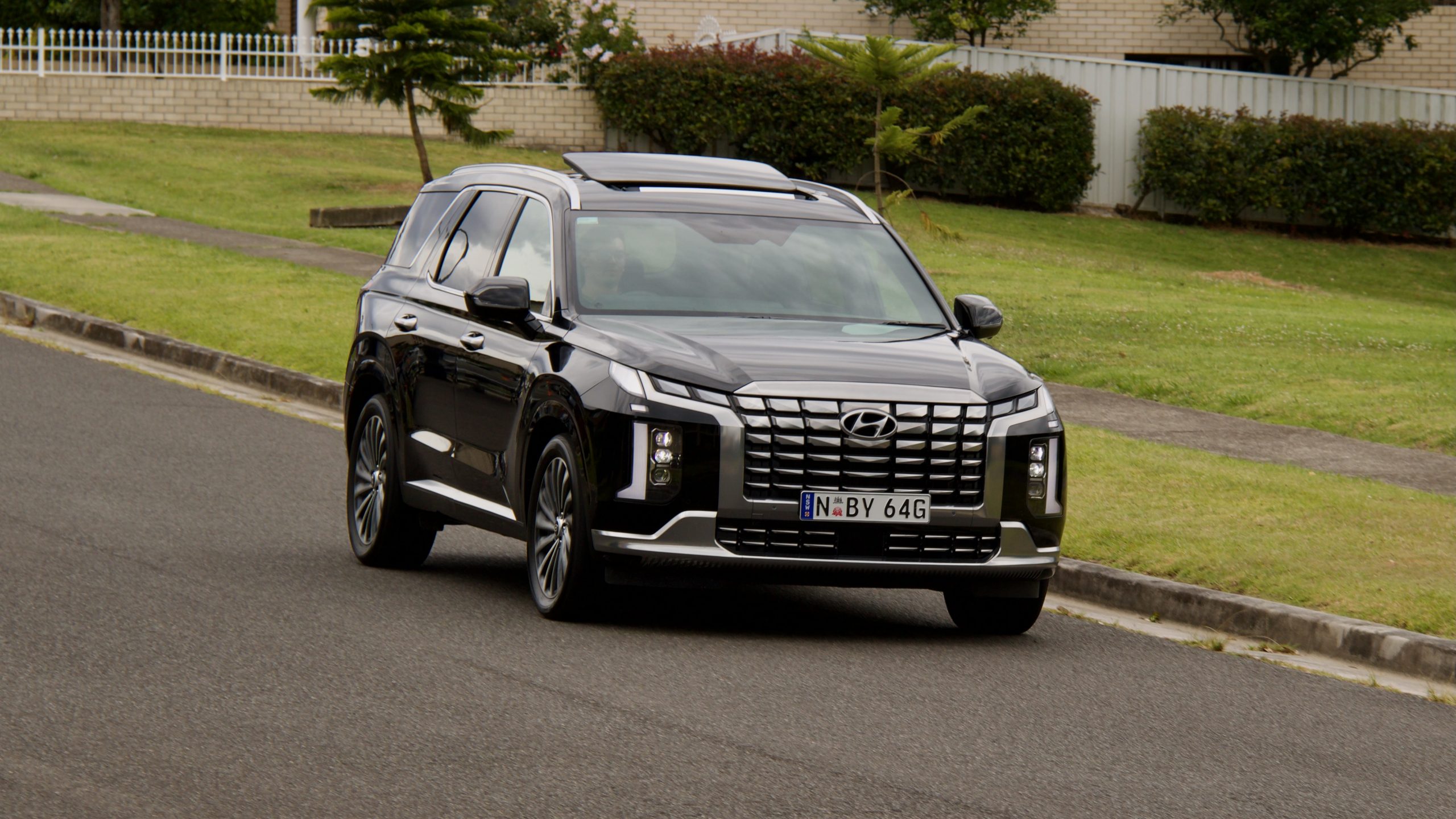
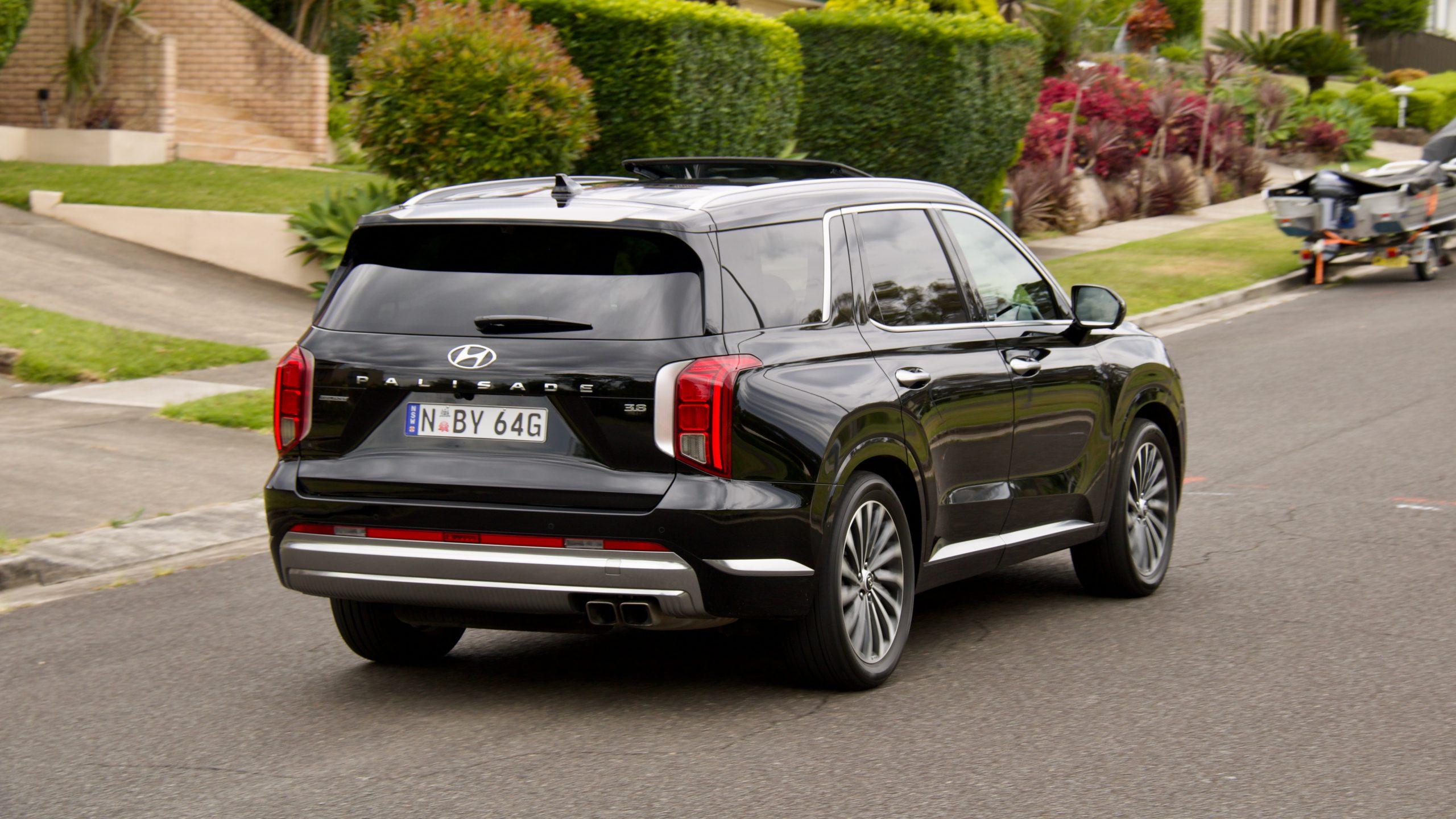
The claimed combined fuel consumption for the 2023 Hyundai Palisade Highlander V6 is 10.7L/100km with claimed CO2 emissions of 251g/km. In reality, you won’t get anywhere near that – in combined driving, we averaged 14.3L/100km, which is roughly equivalent to its V6-powered rivals, but still quite thirsty. Helping costs is that it will run on 91RON regular unleaded fuel, and it has a 71-litre fuel tank.
Ride & Handling: 8/10
Using an extended version of the smaller Santa Fe’s platform, the 2023 Hyundai Palisade is bound to drive well – and thanks to a raft of changes for its mid-life facelift, it’s a pretty positive story from behind the wheel. Due to new ‘Selective Damping Control’ for the suspension – not adaptive dampers but additional channels in the dampers – the Palisade’s ride quality, even on 20-inch wheels, is excellent with pretty good body control too.
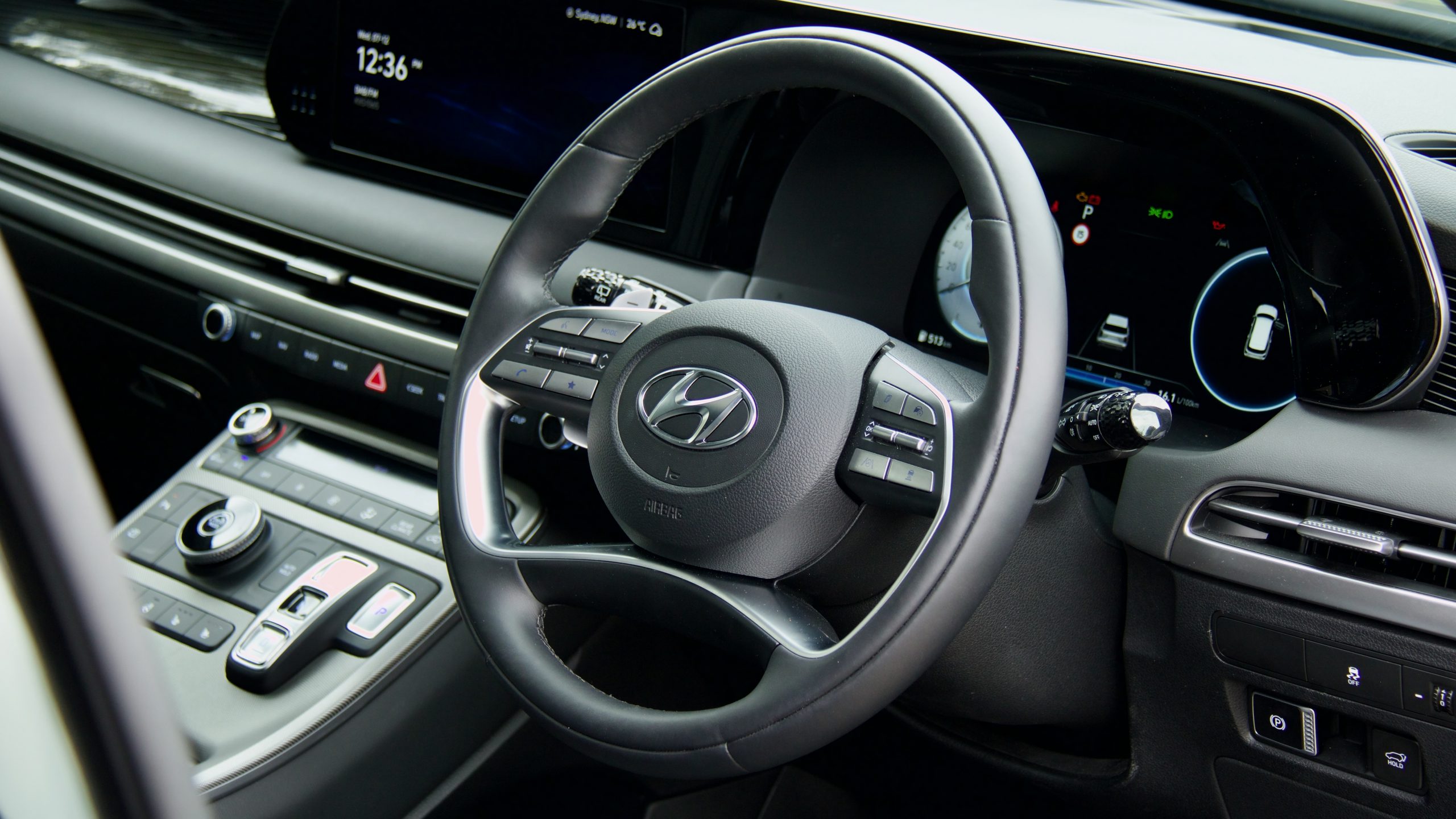

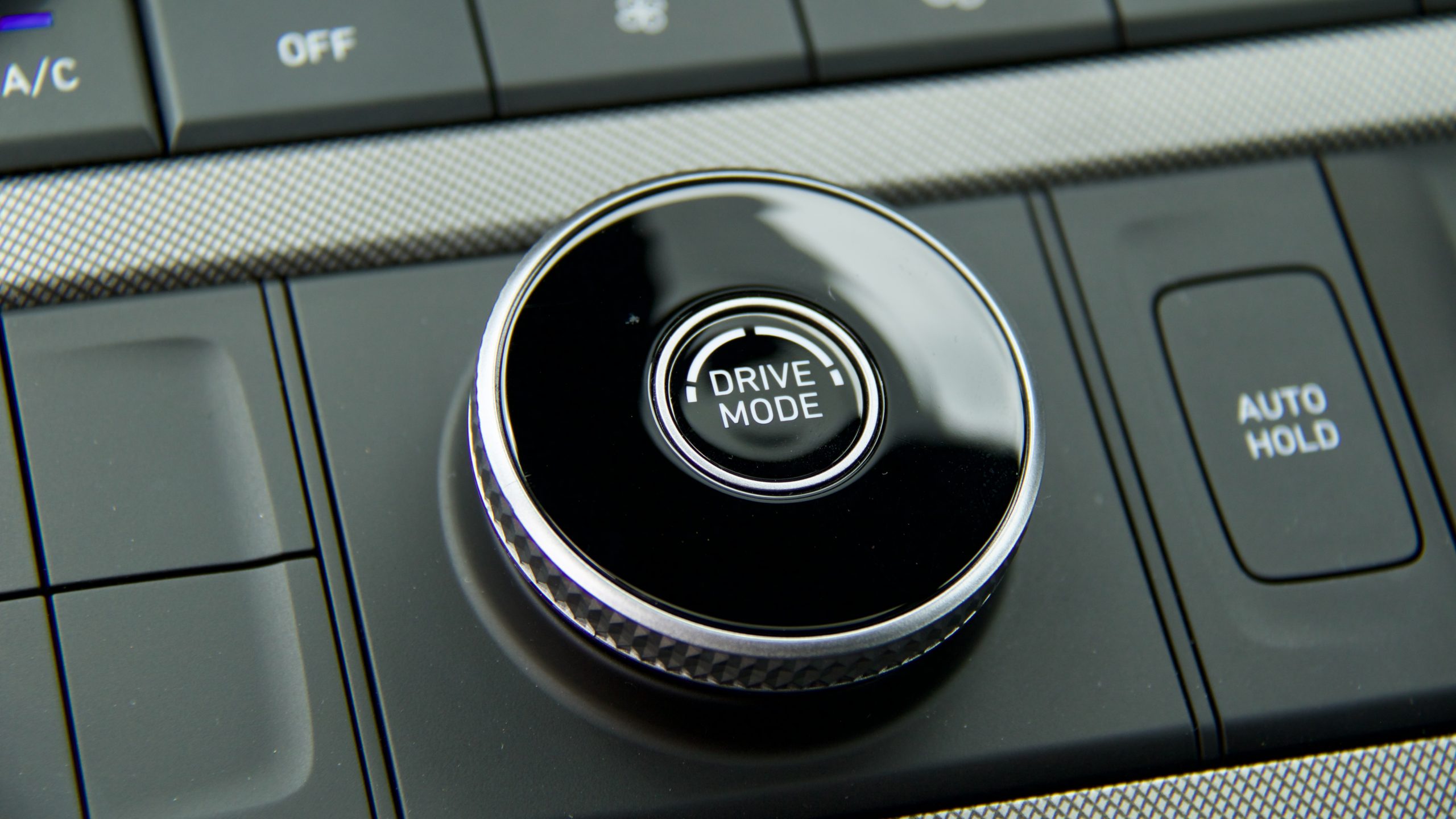
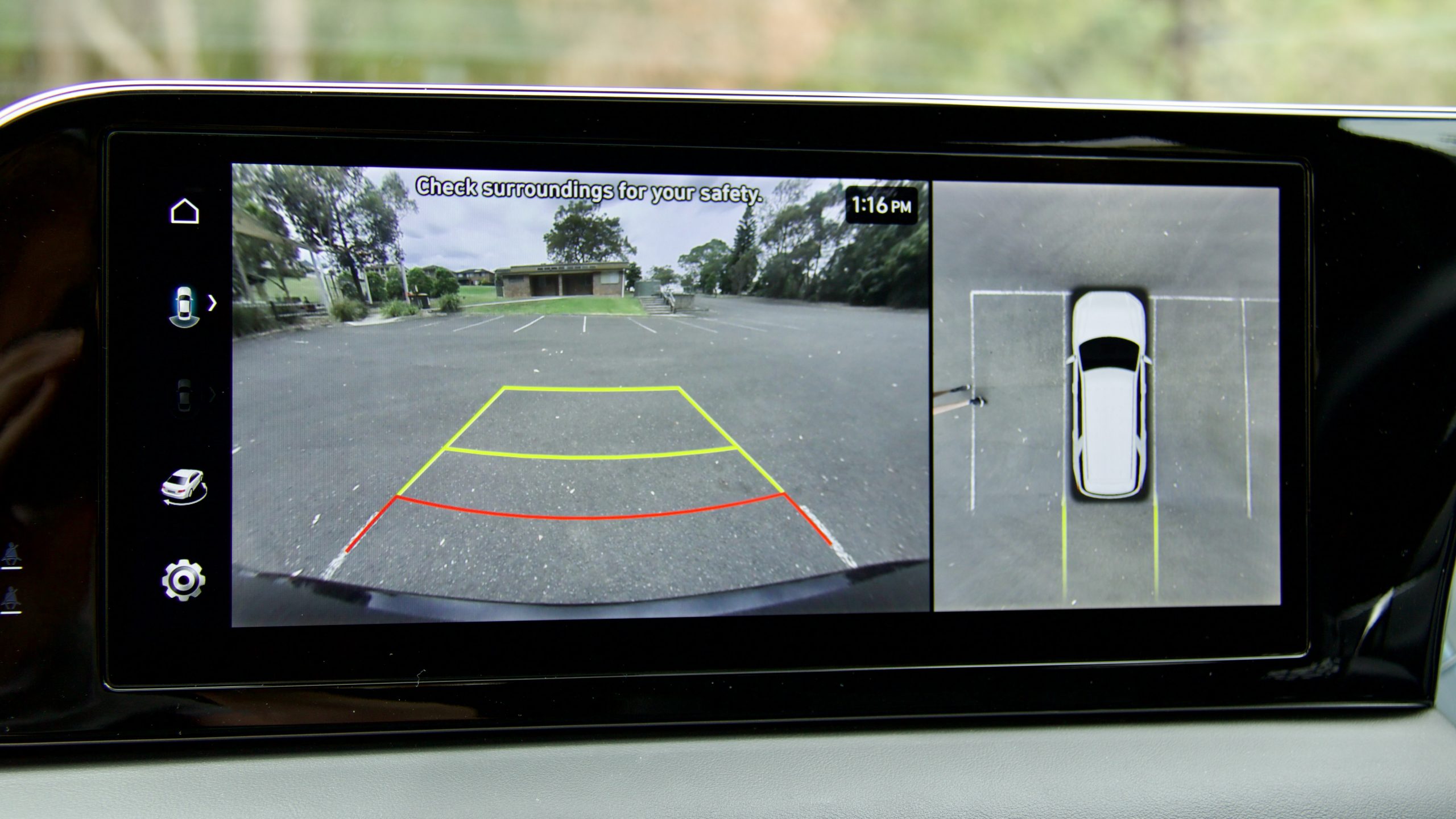
If it were us, we would definitely choose the diesel engine for its all-wheel drive system. Why is that? The V6 is just too much grunt for only the front wheels – it was wet for half the time we had the Palisade and even gently throttle prods resulted in lots of wheelspin. The diesel’s power delivery is more gradual, and its all-wheel drive system is pretty quick to engage in our experience as well. The diesel is also better for towing, with its up to-180kg maximum towball weight (with the Hyundai genuine accessory kit) 80kg more than the petrol’s 100kg rating. Both variants can tow a 2,200kg braked trailer, however.
The rest of the Palisade’s driving experience is quite good. The visibility is decent thanks to large mirrors, the very helpful blind-spot cameras and thin pillars, while it’s also quieter than the pre-facelifted model with improvements in noise suppression.
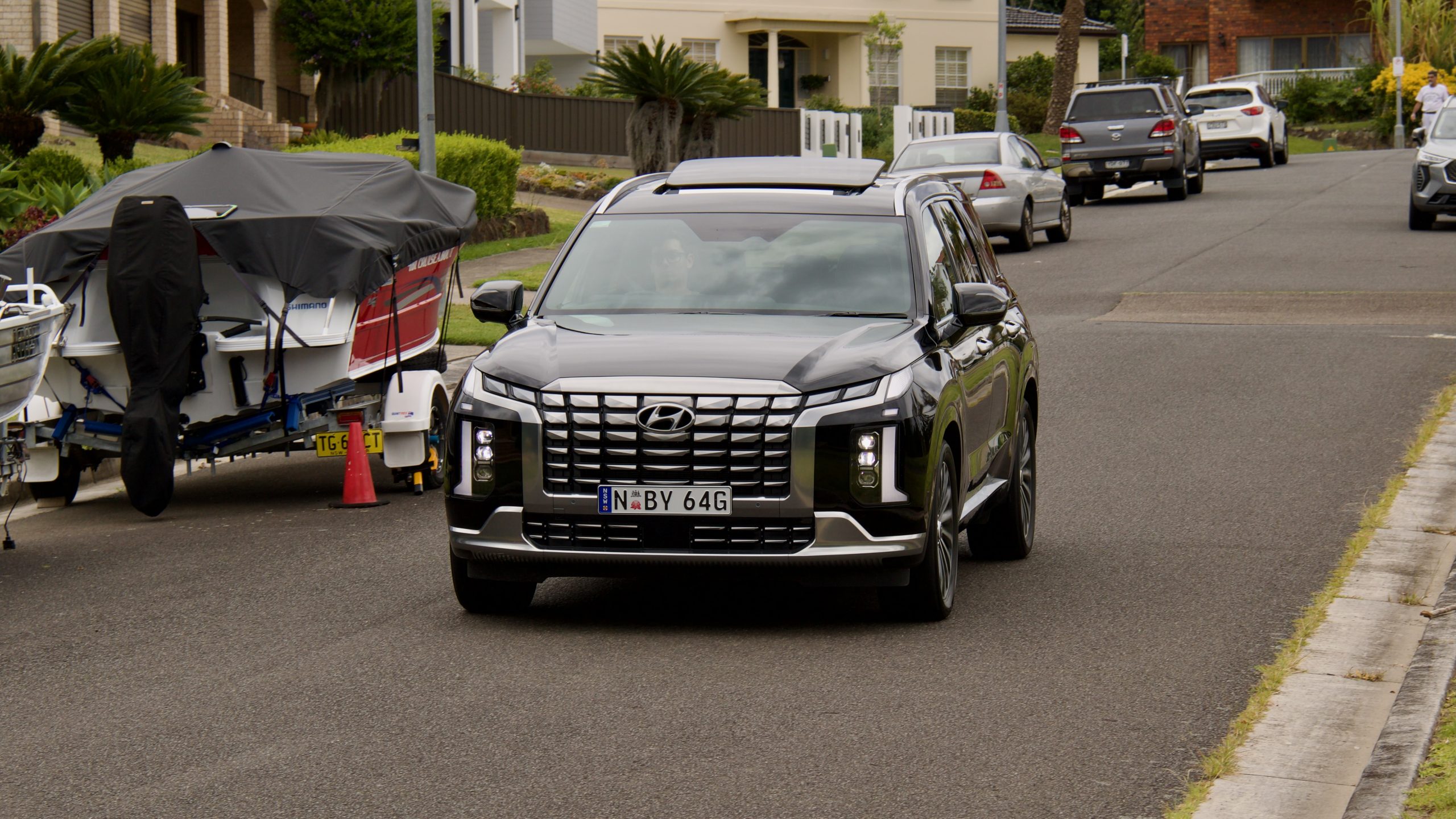
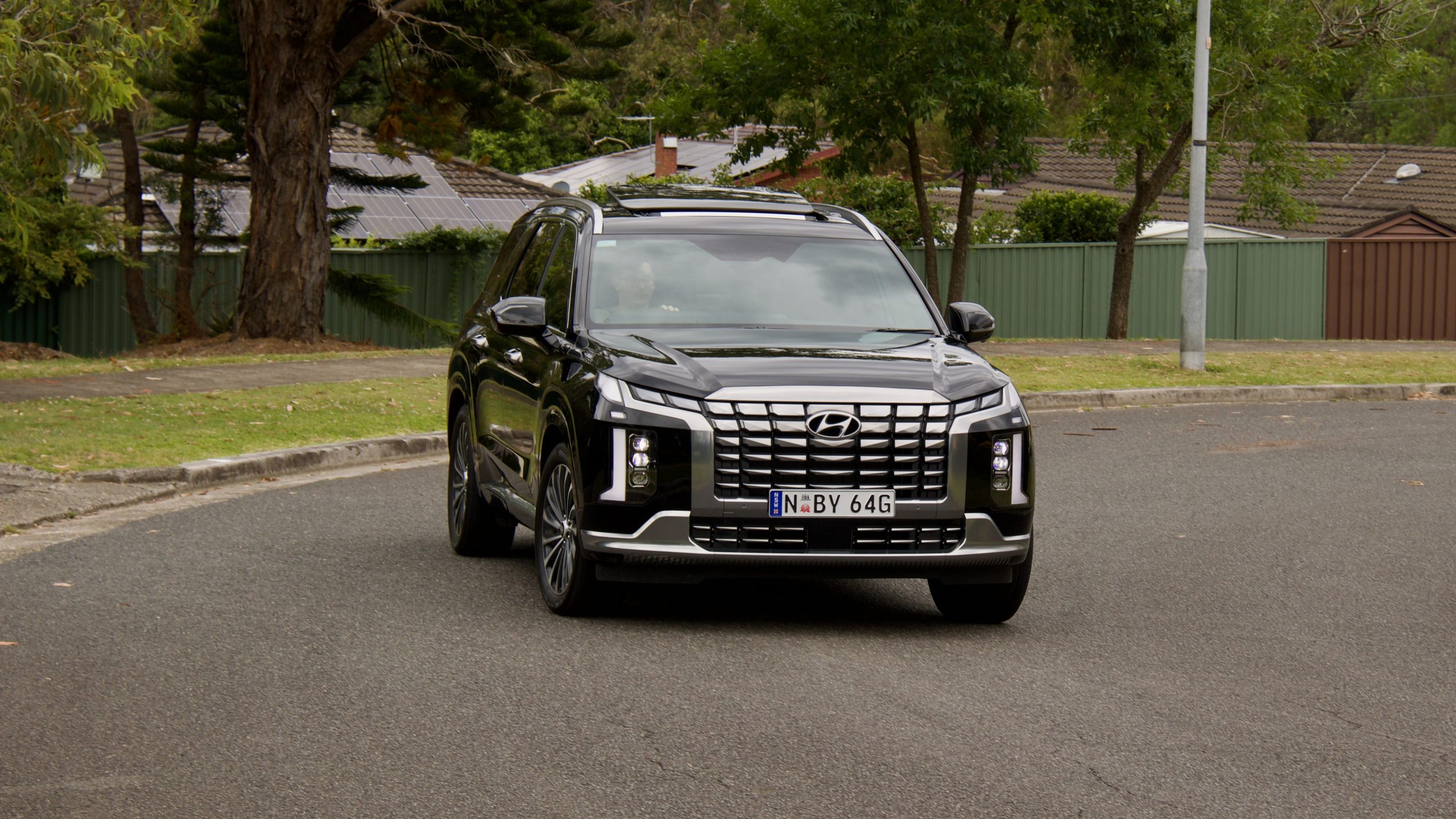
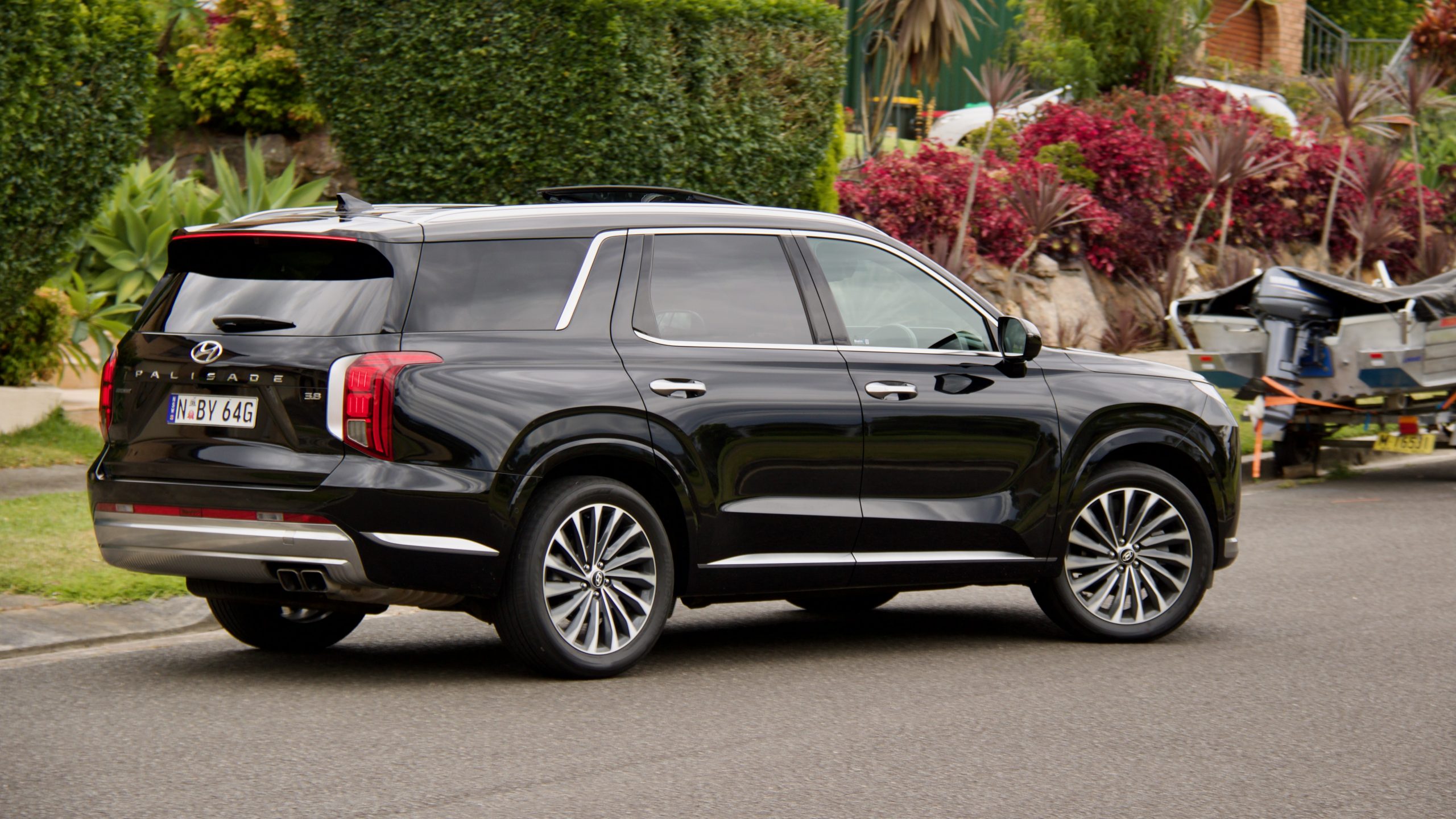
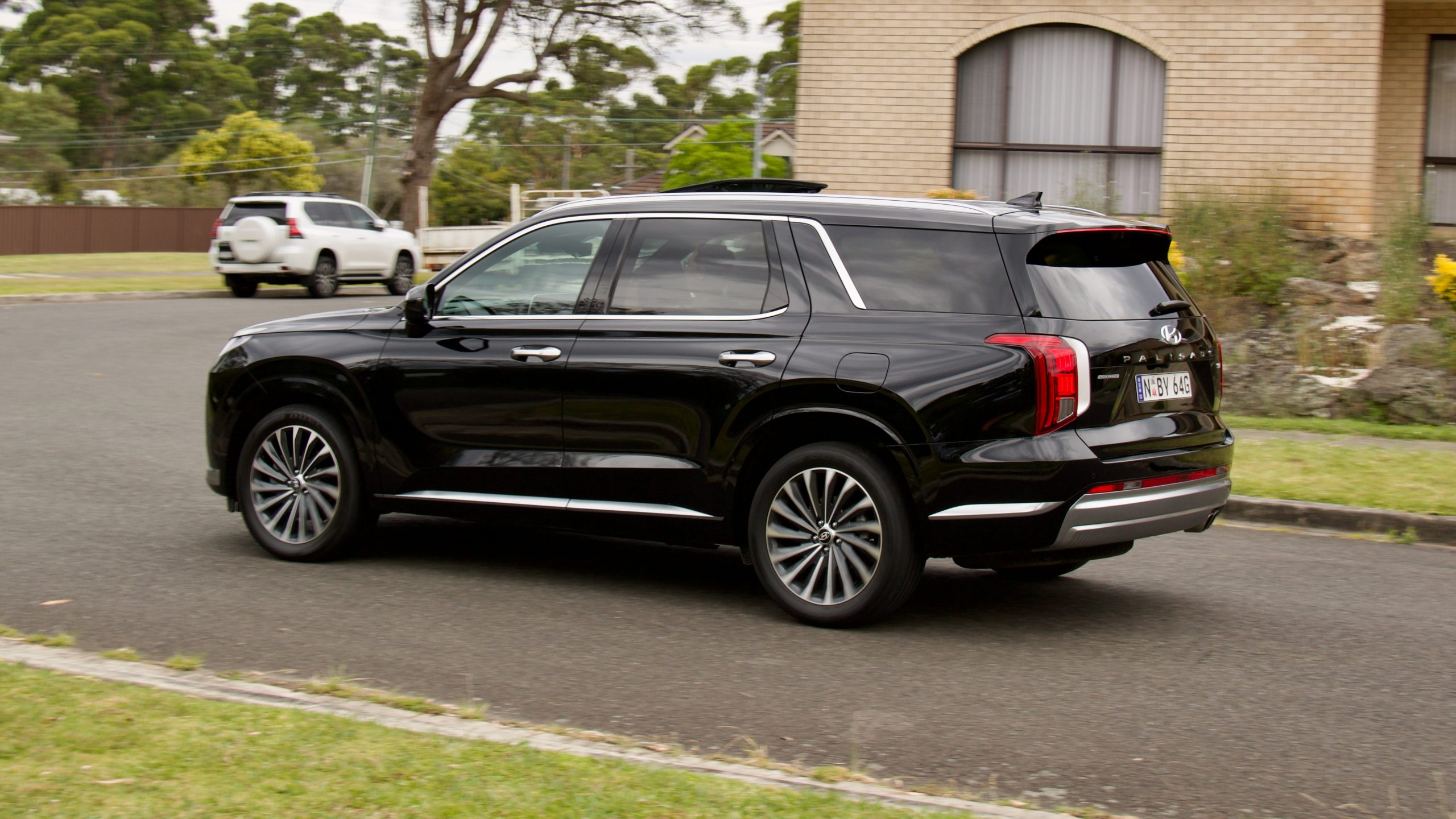
The Palisade’s active safety kit is generally pretty good as well, thanks to well-tuned systems that do their best to calmly alert you instead of making you panic – though the active speed limit system is absolutely infuriating in alerting to you when you’re speeding. That’s no doubt helpful for some drivers, but the system relies on the camera in the windscreen, which means that even at midday on a Saturday, you’ll be loudly alerted to doing 45km/h in a 40km/h school zone. Worse still is that while you can turn it off, this has to be done every time the car starts and doing so kills the handy speed limit recognition system completely.
Interior & Practicality: 9.5/10
The interior of the 2023 Hyundai Palisade Highlander is undoubtedly its biggest selling point. Quite simply, it’s excellent. It’s roomy, packed with useable technology, features high quality materials and did we mention roomy? Even six-footers will be comfortable in the third row, which is very rare in cars smaller than buses.
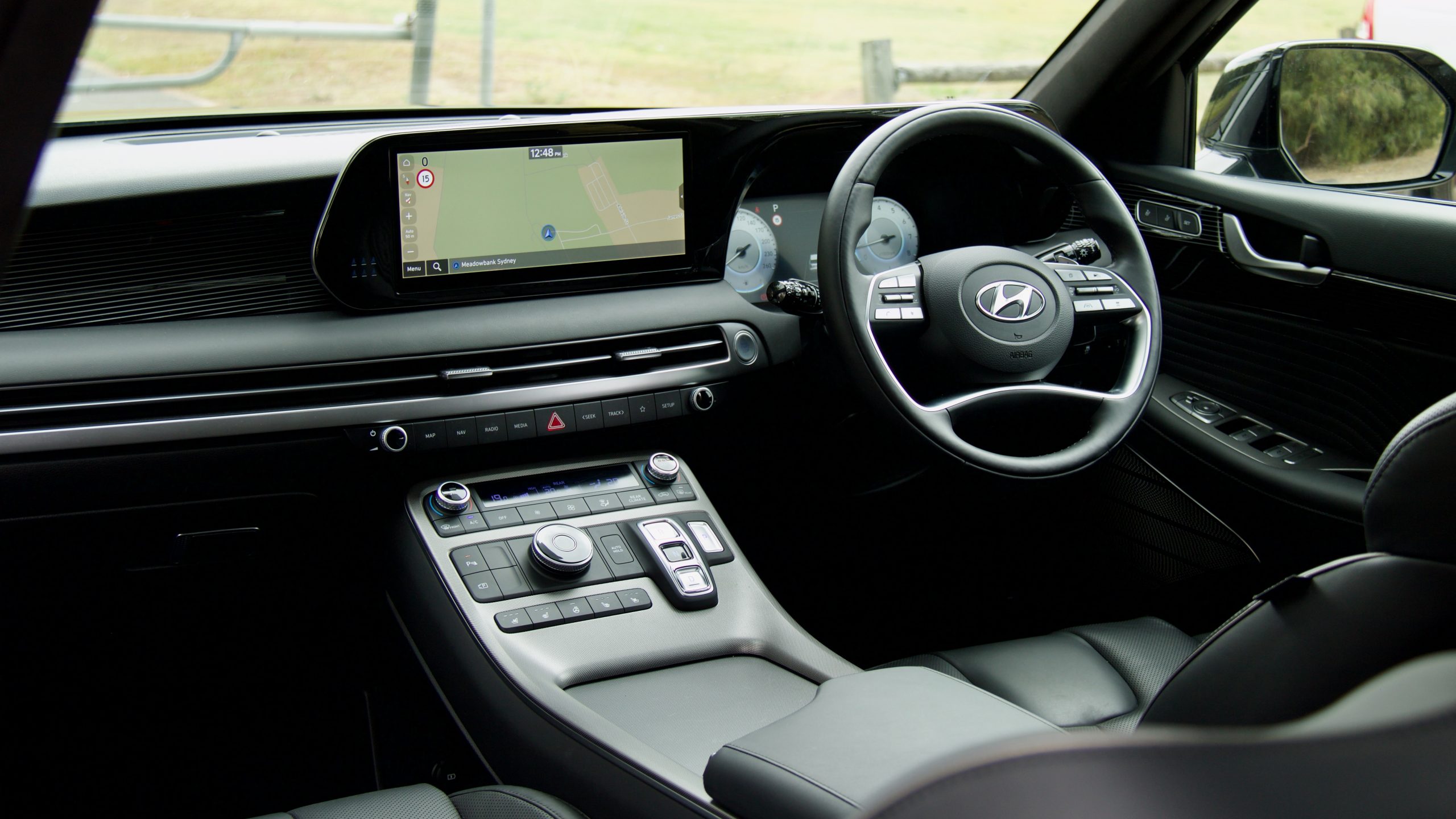
The quality inside the Palisade is solid, with soft touch materials covering most surfaces and nice touch points carried across from other Hyundai products. The facelifted model upgraded the Palisade’s interior further with new stalks from later Hyundai models, as well as refreshed trims and the result is quite nice. The black Nappa leather trim feels quite nice and appears to wear well. Lighter colours are also available, but that’s not a great idea for families with young kids.
Centre of the Palisade’s interior is a 12.3-inch touchscreen that’s well featured with wired Apple CarPlay and Android Auto, satellite navigation with live traffic, digital radio, online services like weather reporting and a 12-speaker Infinity sound system. It’s the same screen and software used in many other Hyundai products and it’s great – it’s easy to use, the screen quality is nice and it adds a luxurious feel. Finally too, the Infinity sound system – a typical sore point with Hyundais – has excellent bass and the newly-digital driver’s display also looks great.
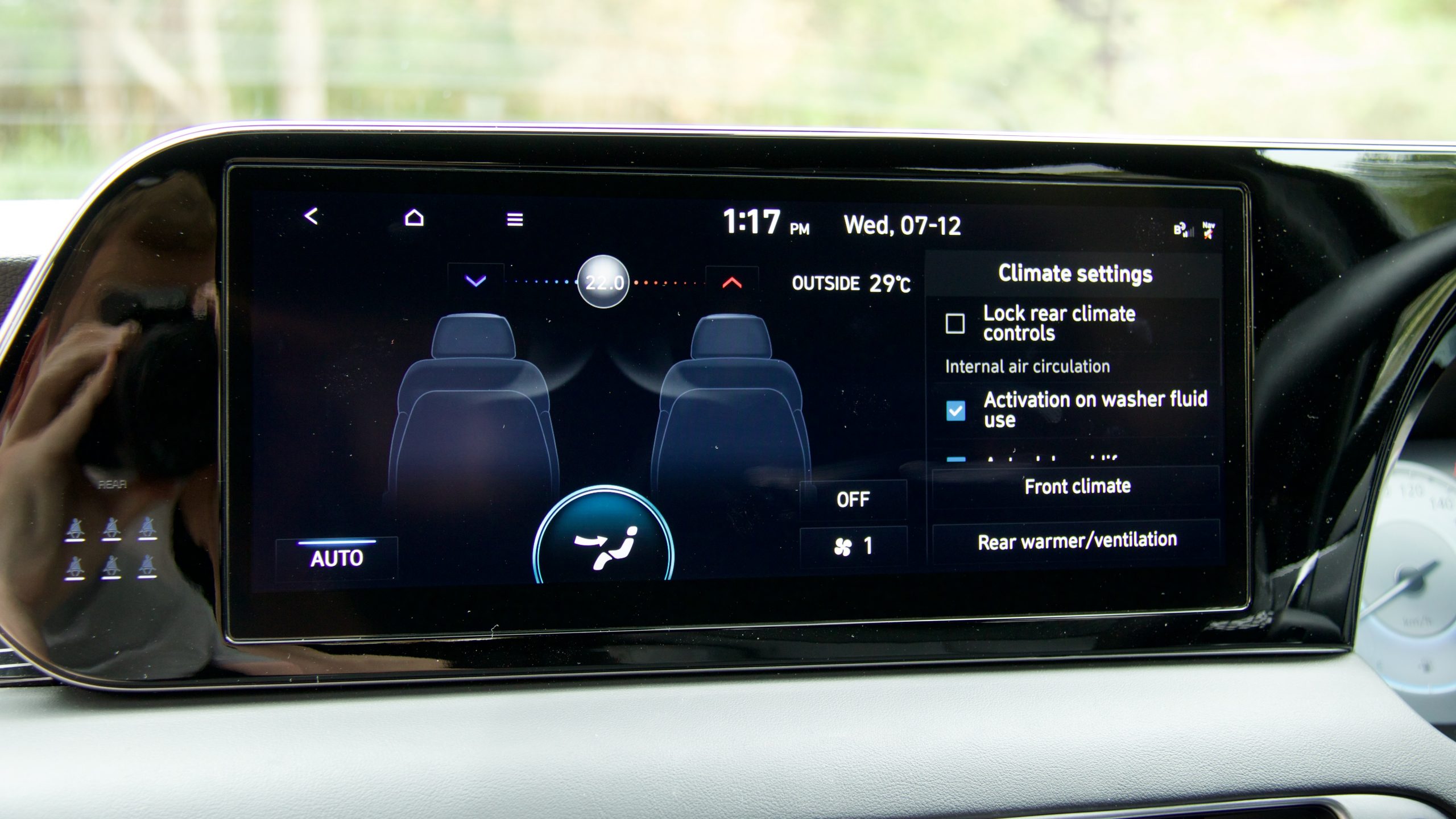
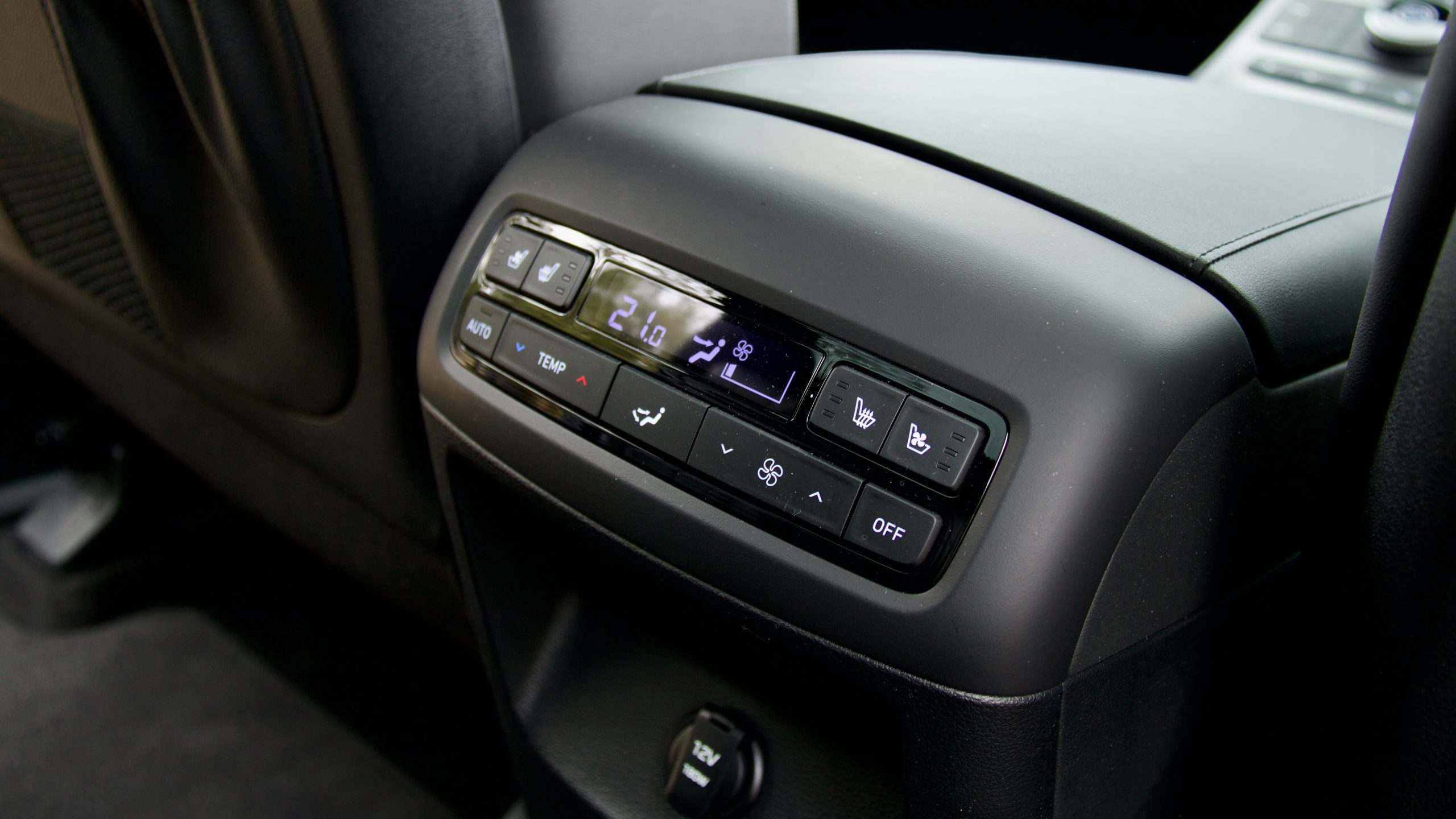
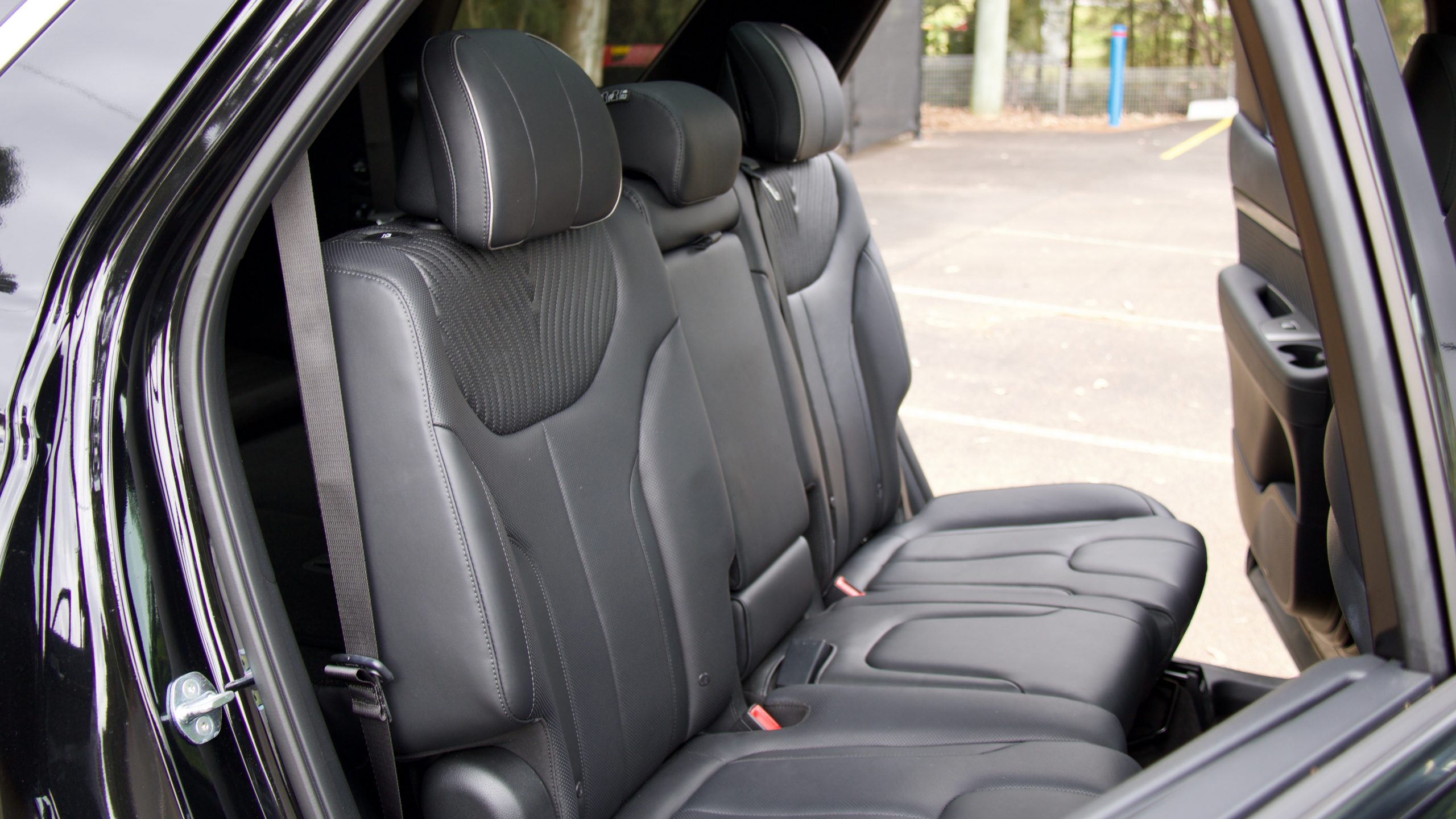
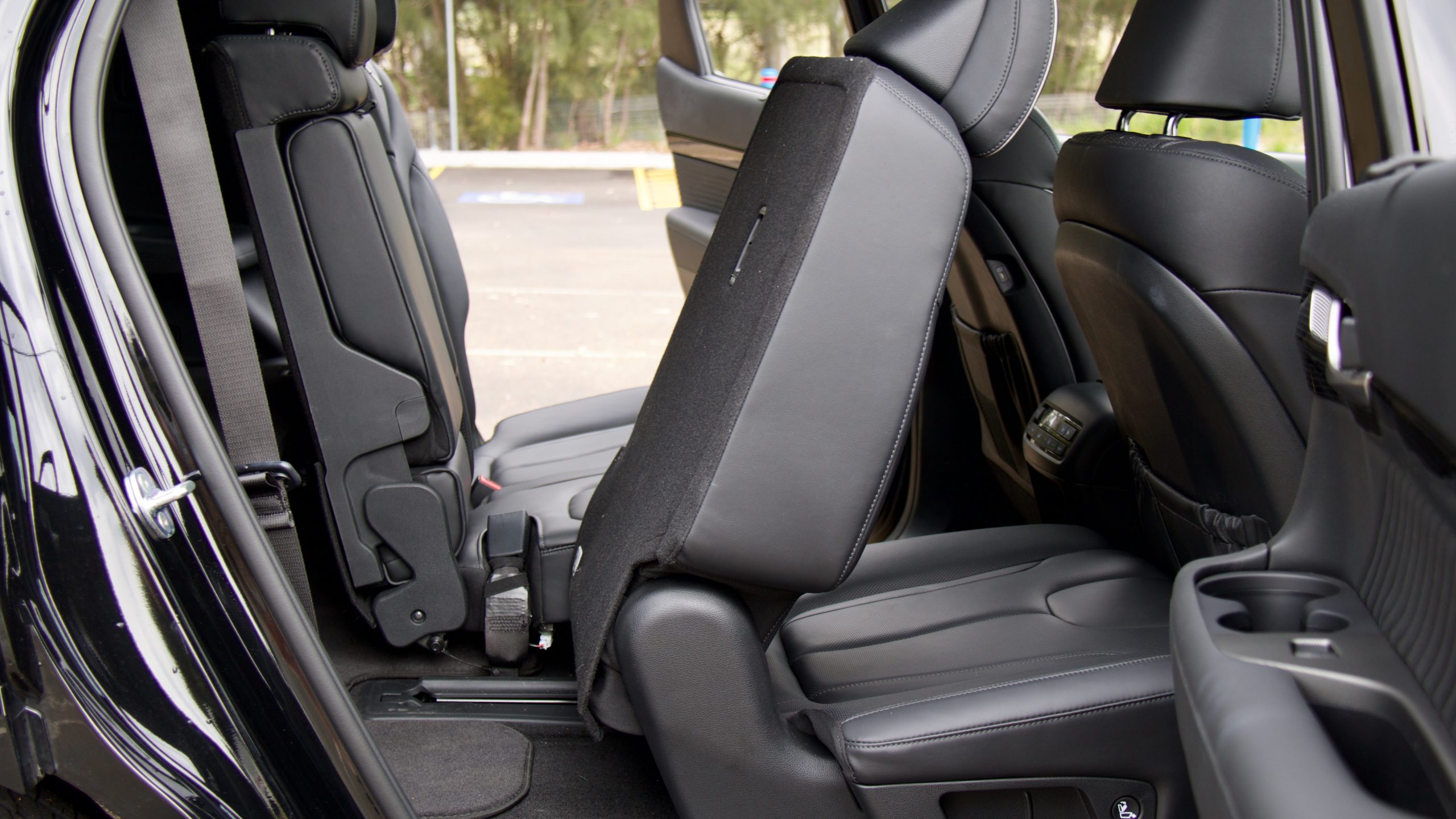
The Palisade’s practicality is excellent too, with large door bins in each door, a massive centre console with adjustable cup holders and a wireless phone charger, a tray underneath that with two charging ports, a large glove box and a big centre console box underneath the centre arm rest. There are also no less than 17 – yes, seventeen – cupholders in the Palisade’s cabin, as well as 11 power sources.
The real star the Palisade show, however, are the middle and third rows of seating because they’re fantastic for families. Each seat is comfortable – even the third row – and spacious even for taller people, while there are plenty of features to keep the kids amused.
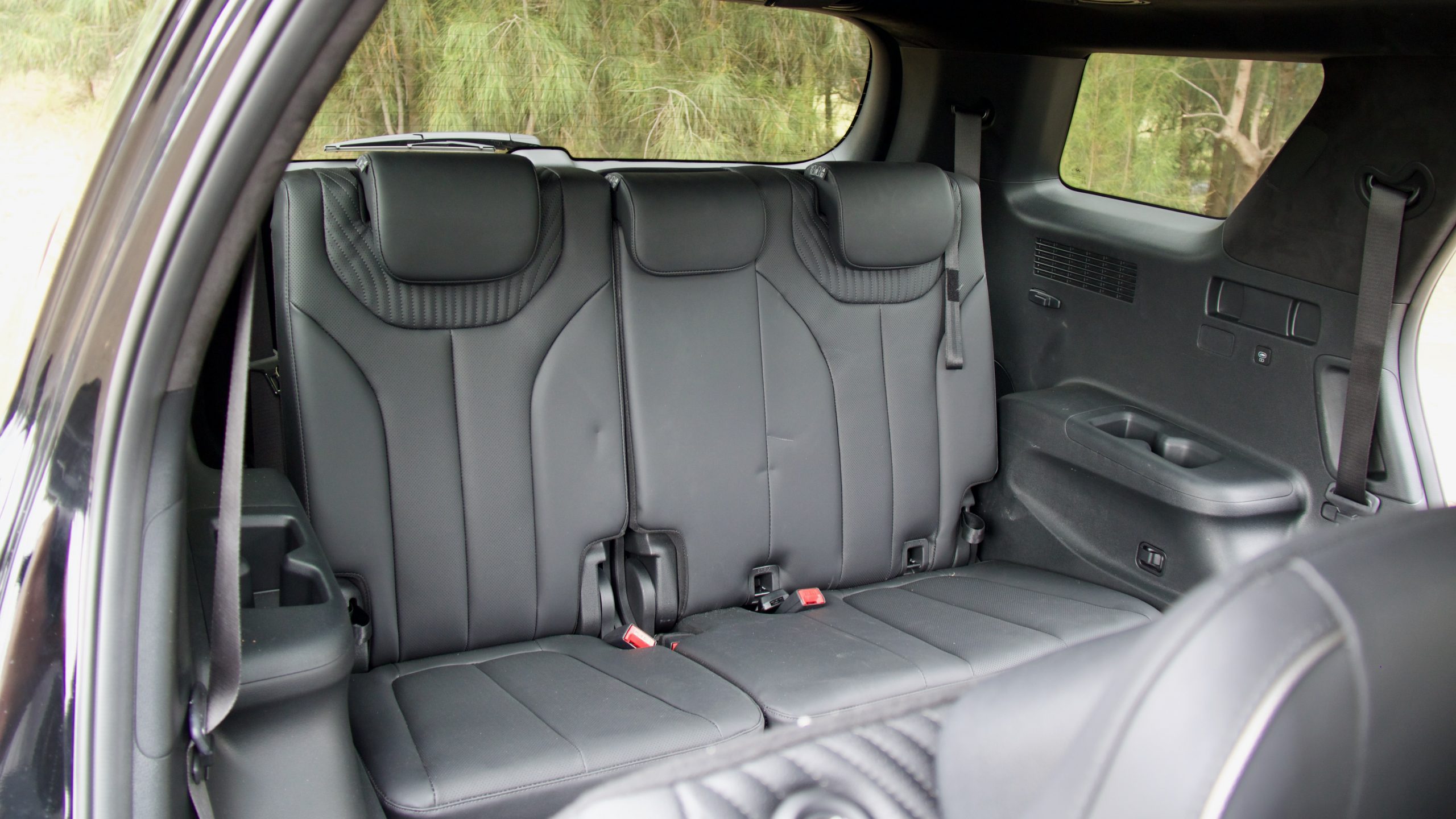
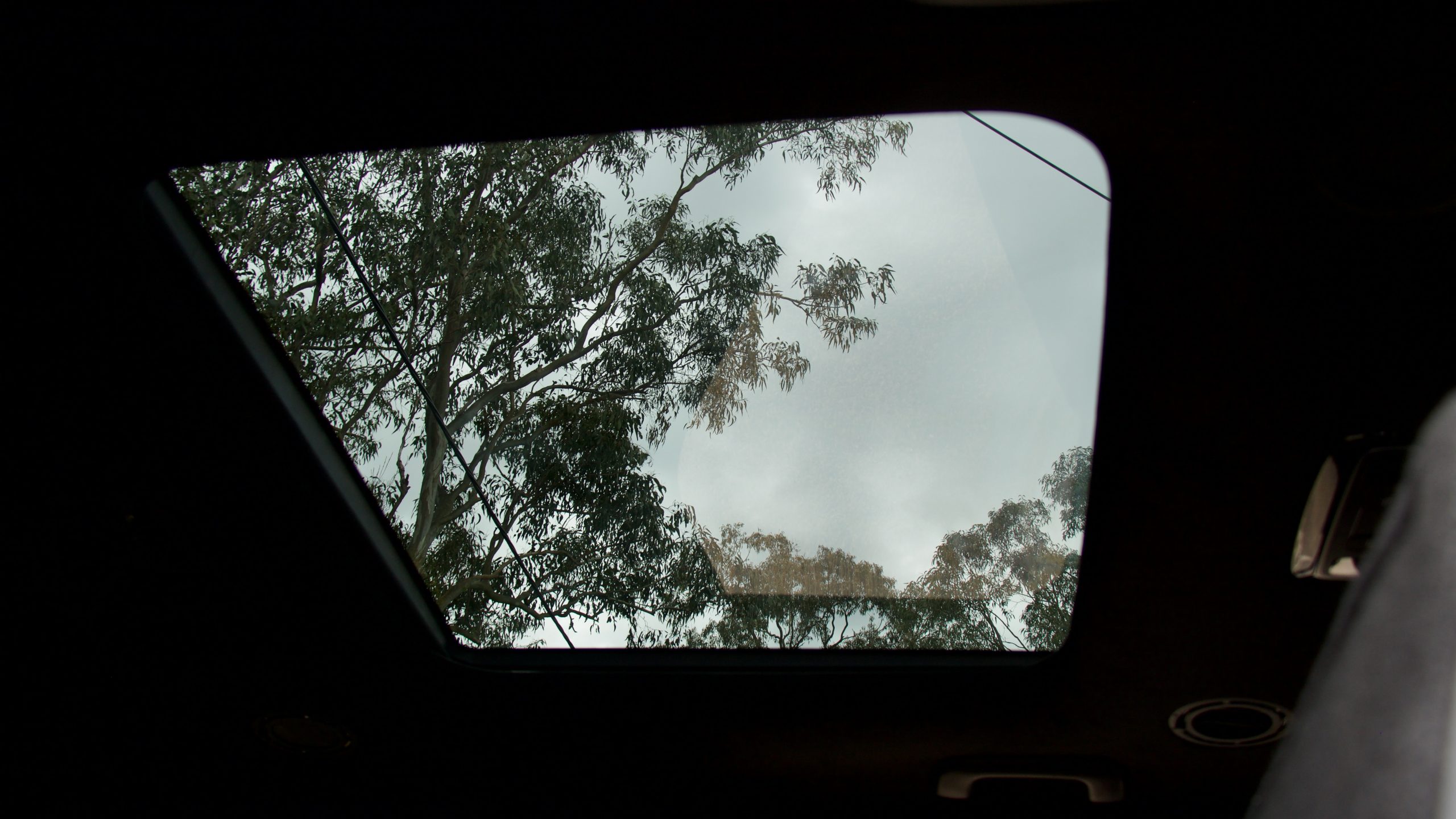
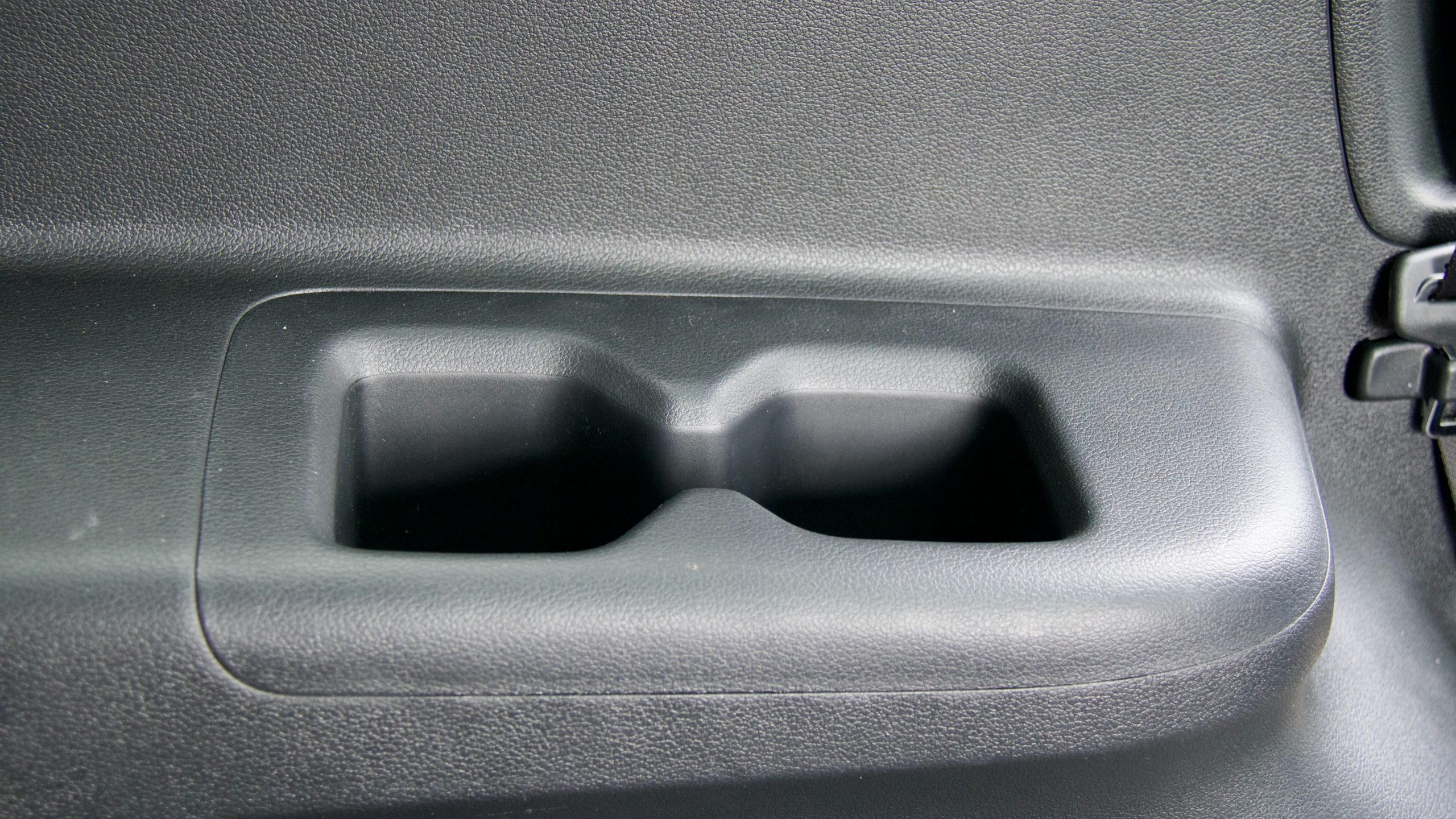
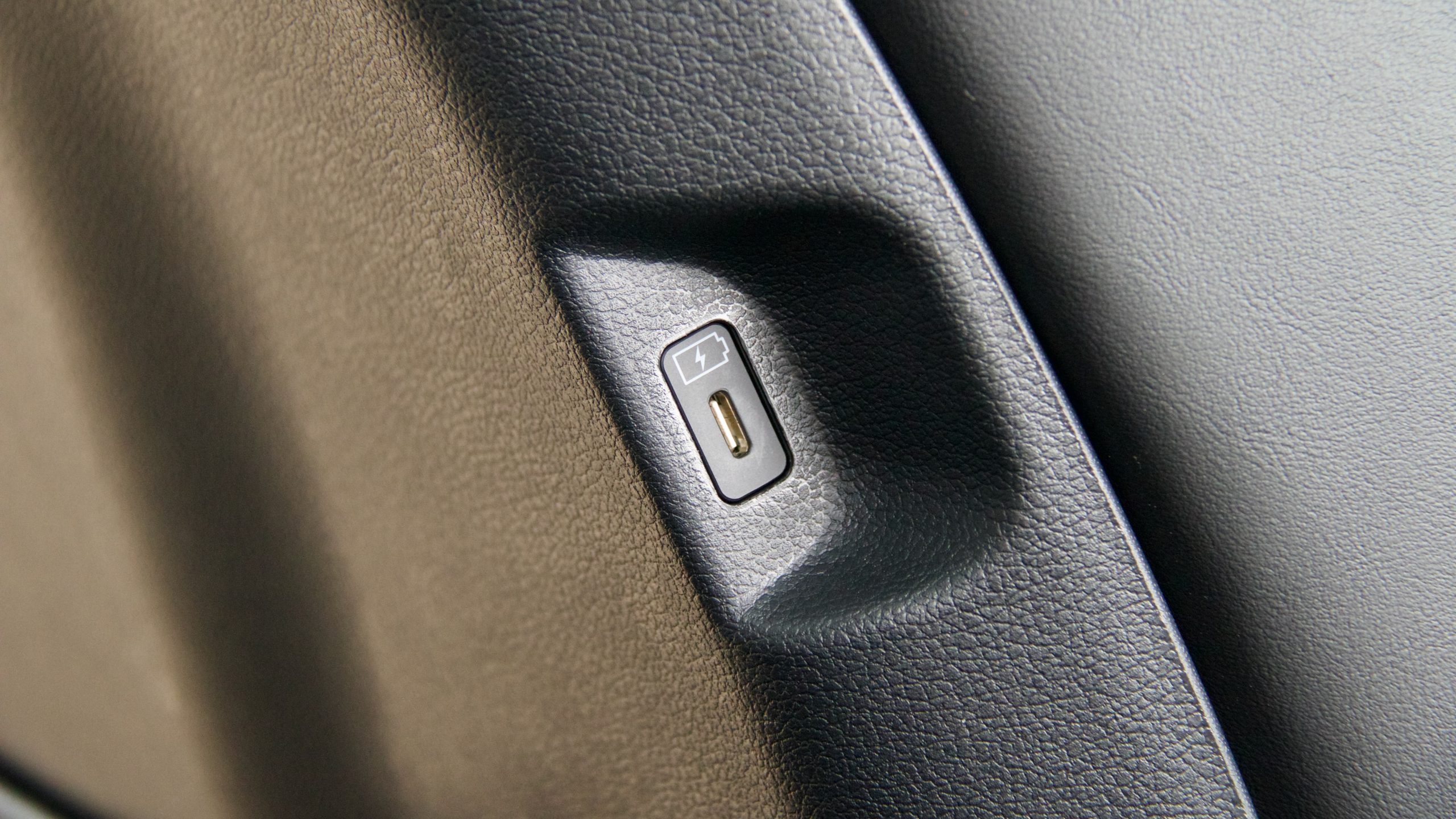
The middle row has its own climate zone, as well as heated and ventilated outboard seats, two USB-C charging ports and even sun blinds in the doors. Importantly too, there are two ISOFIX points in the second row and one in the third row, as well as three top-tether points in the second row and two more in the third row.
Above both the second and third row of seating is a large glass roof, which really adds an airy feel to the space. The third row also has its own air vents, two USB-C charging ports, four cup holders and plenty of space. Access to the third row is really easy as well, with a button on the side of the middle row of seats pushing the seat forward and out of the way, and unlike the smaller Santa Fe, the curtain airbags extend to the third row.
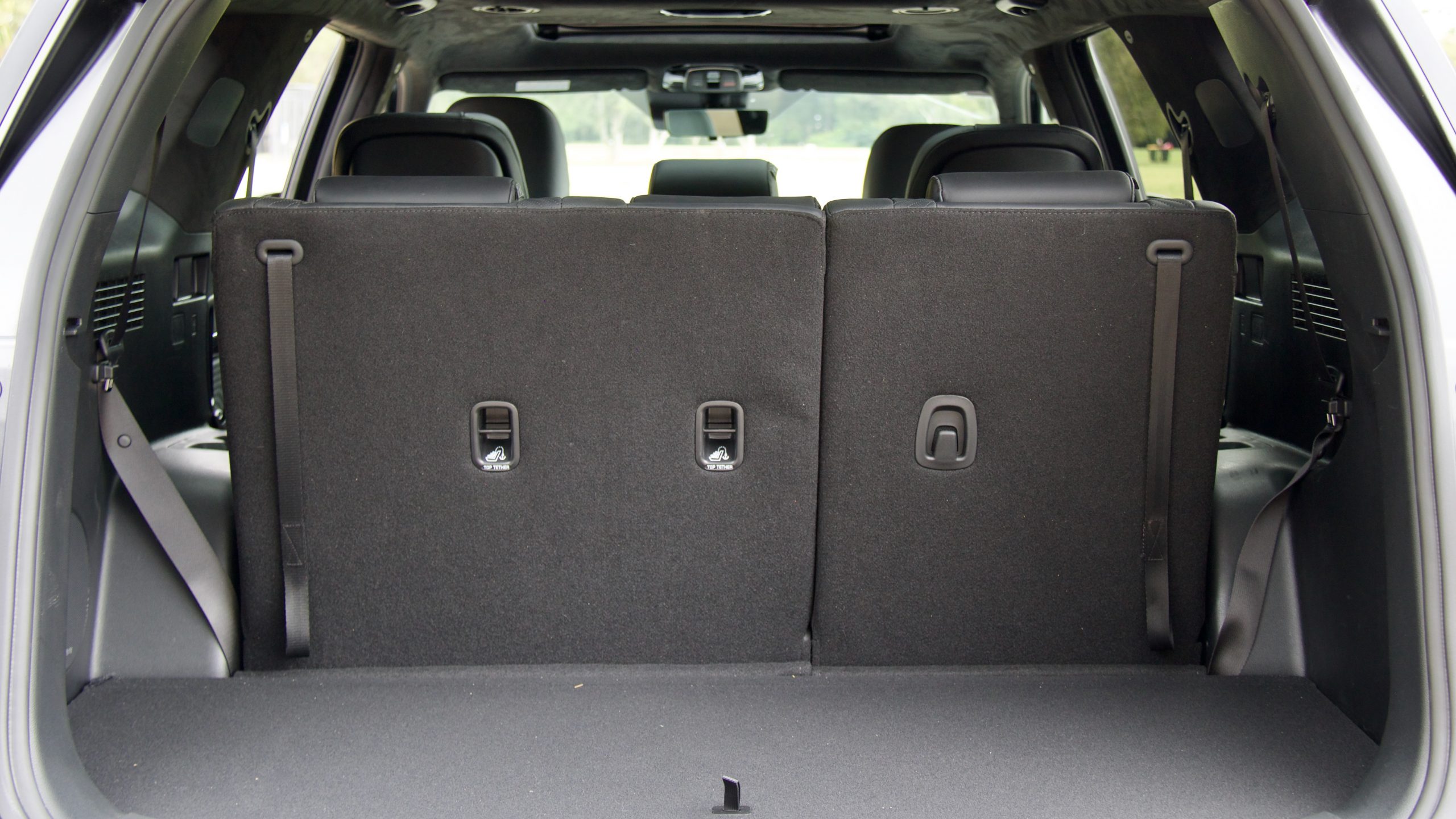
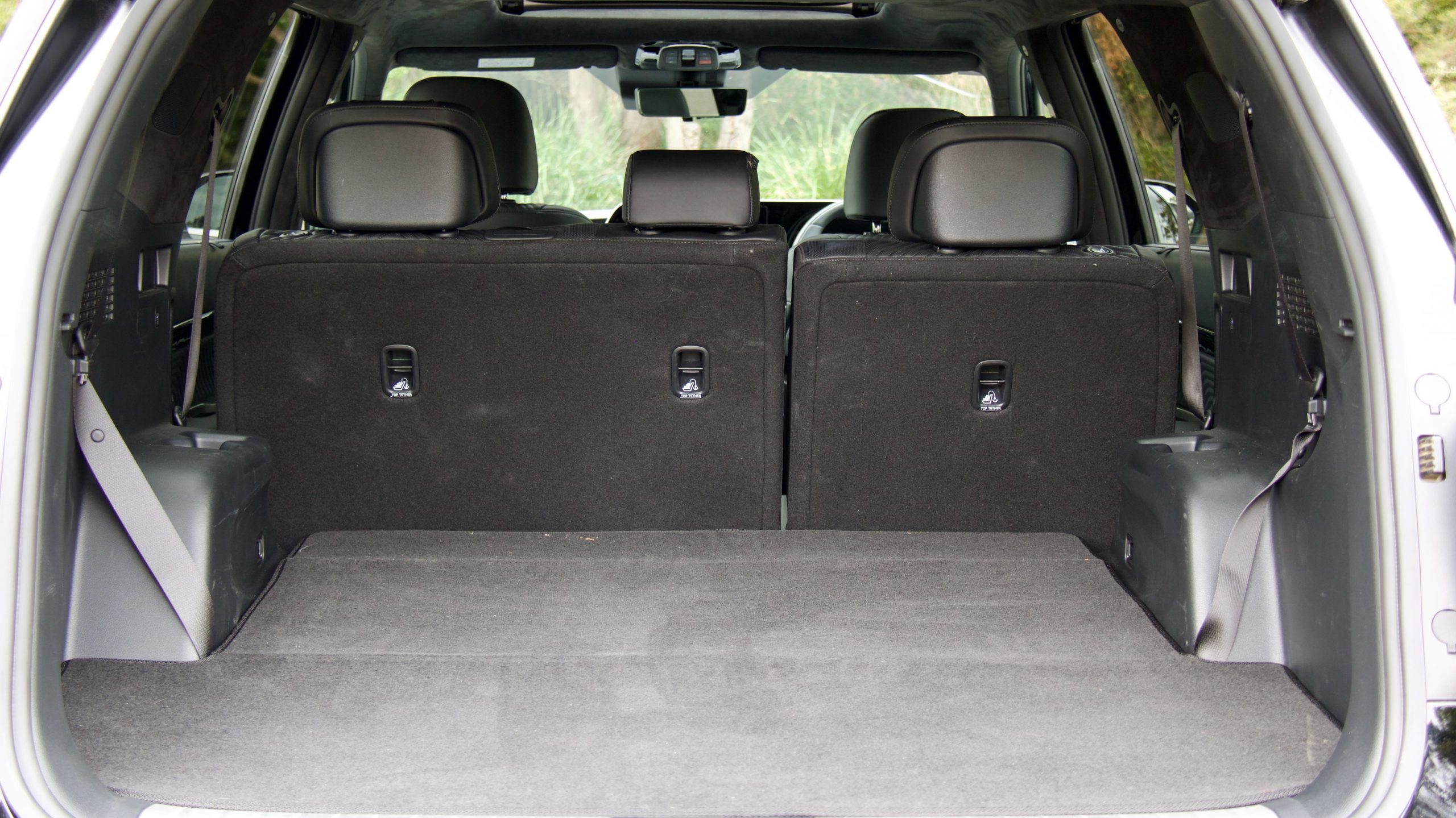
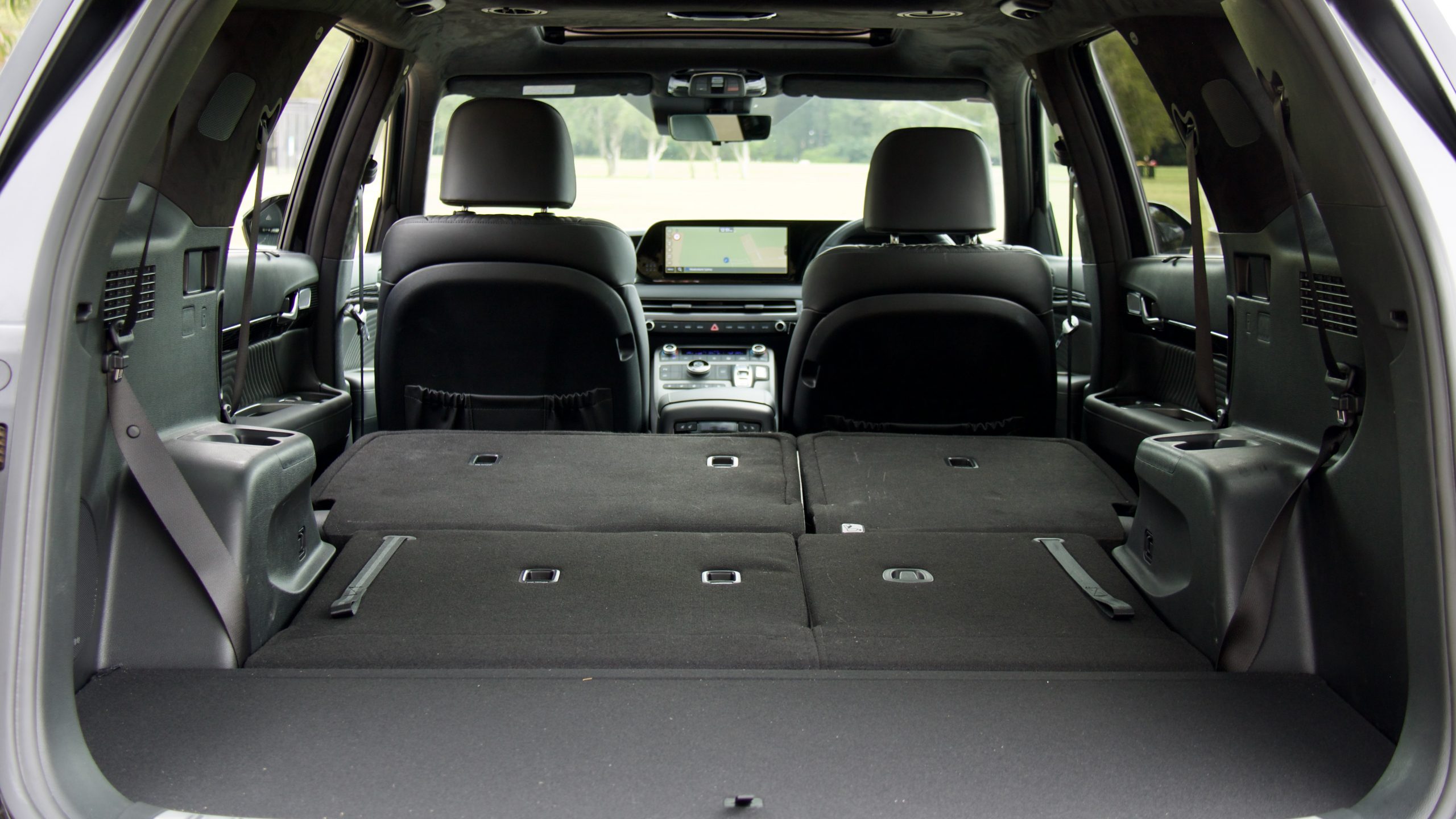
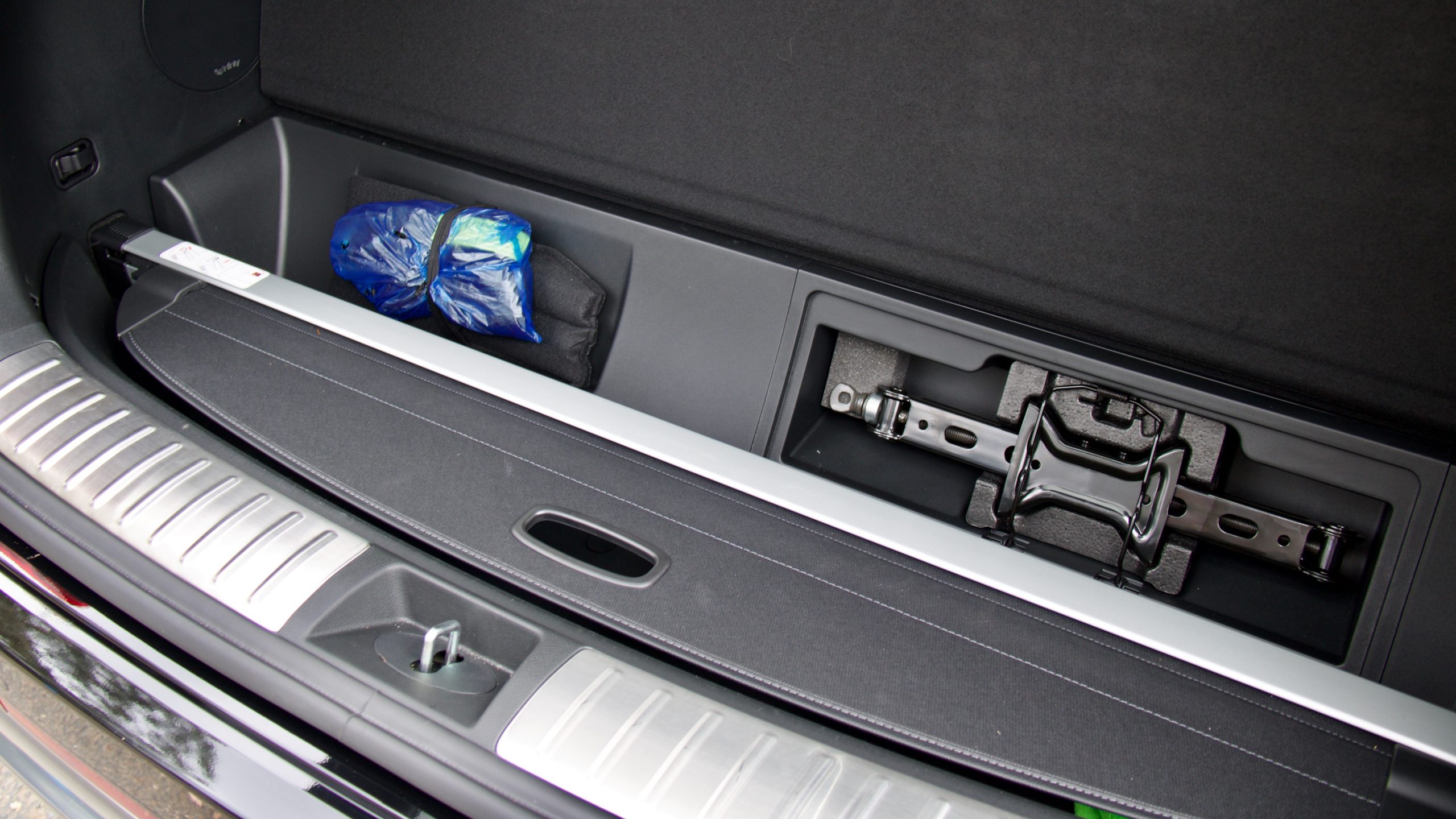
Behind the third row of seats lies a large 311-litres of space, while folding the third row down opens this up to 704L. The boot itself has hooks, under floor storage, a 12V socket and even buttons to fold the middle row of seats. When all seats are folded, the floor is completely flat and although Hyundai doesn’t provide a figure, we’d guesstimate it to be over 2,000L in total. There’s also a full-size alloy spare wheel, which is something that Hyundai is very good at offering in Australia.
Service & Warranty: 9/10
Like all other new Hyundai products, the 2023 Hyundai Palisade Highlander has a five-year/unlimited km warranty with 12 months roadside assistance that’s extended by 12 months when you service at a Hyundai dealership. The Palisade V6’s service intervals are once-yearly/every 15,000km – whichever comes first – and five years/75,000km of servicing costs a reasonable $1,995 ($399 per service).
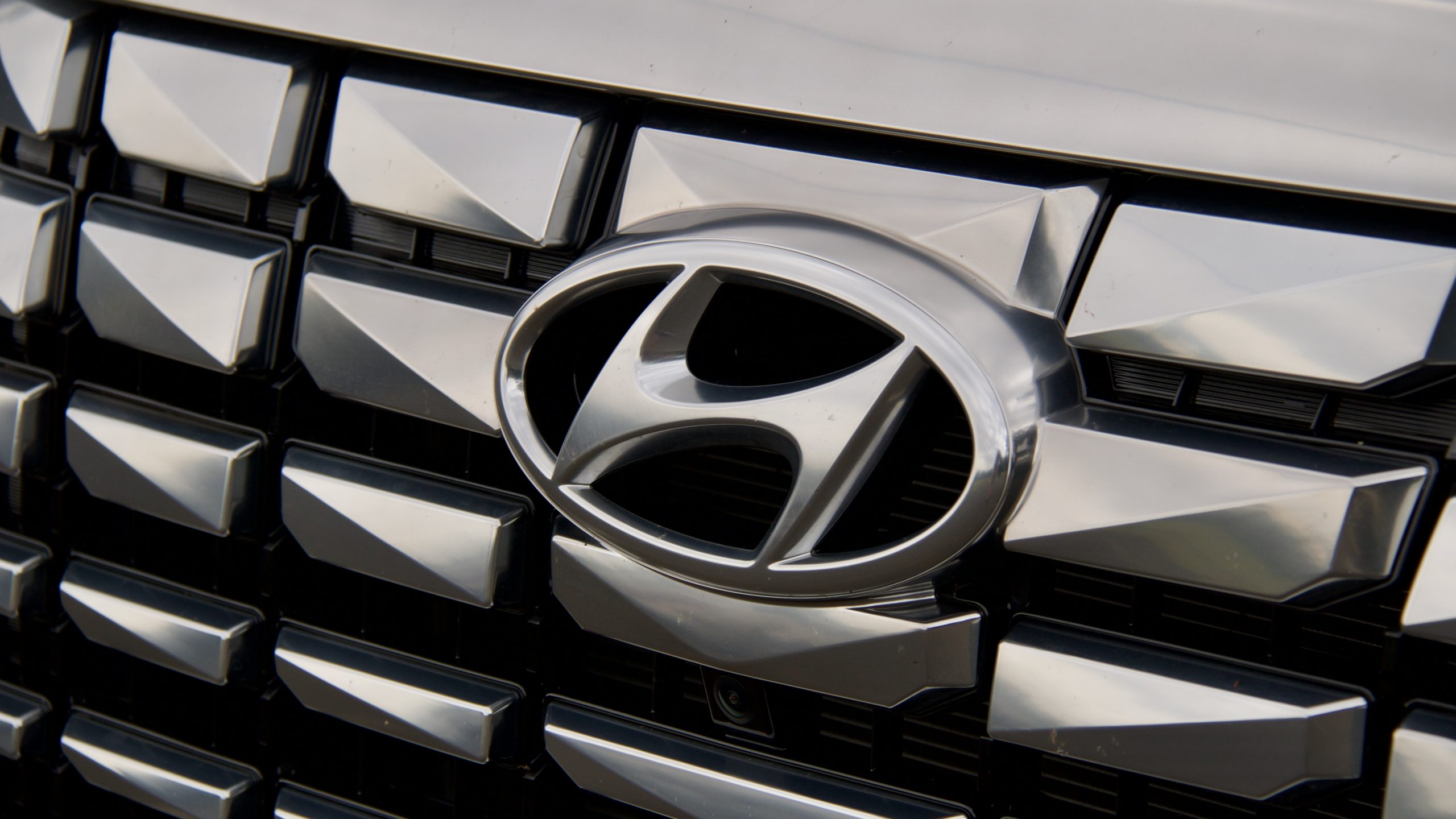
Both Toyota and Mazda feature the same five year warranties as Hyundai – with an extra two years for the mechanicals of the Kluger if serviced at a Toyota dealership – but while Mazda features five years of roadside assistance, Toyota features none. Five years of servicing the Kluger costs just $1,250 ($250 per service), while doing the same for the Mazda CX-9 costs $2,291 ($458 per service), which isn’t much more expensive than the Palisade, but its shorter 10,000km intervals mean that you’ll have covered 25,000km less in that time and if you travel more, you’ll be paying even more.
The 2023 Hyundai Palisade Highlander V6 DiscoverAuto Rating: 8.3/10
As a does-what-it-says-on-the-tin proposition, the 2023 Hyundai Palisade Highlander V6 is an excellent offering. It carries eight people in impressive comfort, with a spacious, tech-filled and refined cabin that offers plenty for both the driver and their passengers. It’s also absolutely loaded with standard equipment, yet it’s relatively good value for money, it drives well with a very comfortable ride and it’s got a solid aftersales package as well (as you’d expect from Hyundai).
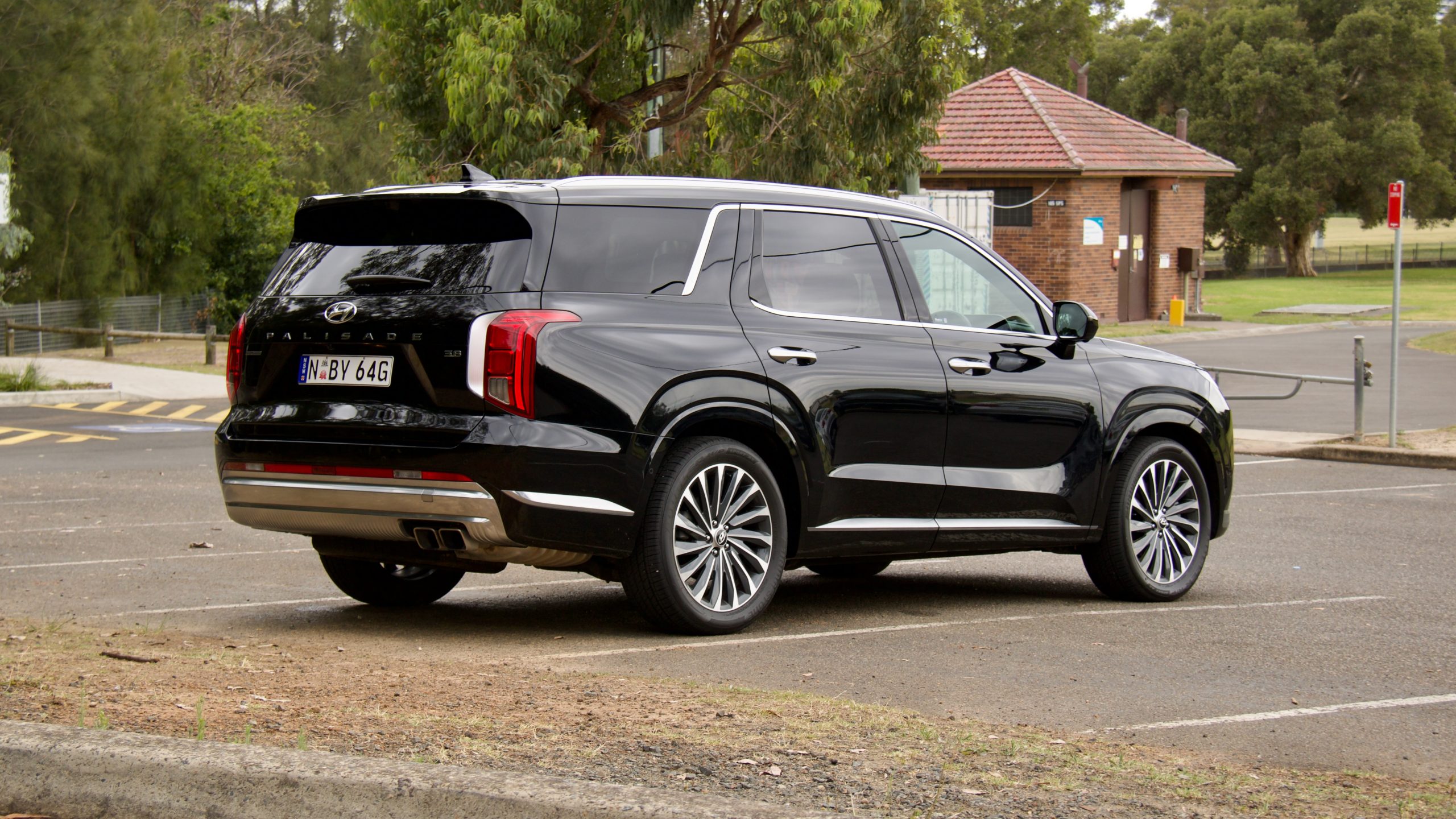
While it’s not perfect – the thirsty V6 engine pales compared with the optional diesel, it needs the diesel’s all-wheel drive system and the traffic sign recognition system will drive you crazy – we think the Palisade offers up a really well-rounded package that families will love. It’s surprising that a mid-life update can make such a big difference, but the 2023 Hyundai Palisade Highlander is proof that even the smallest of updates can go a long way in transforming a product. But just make sure that it’s the diesel that you buy!
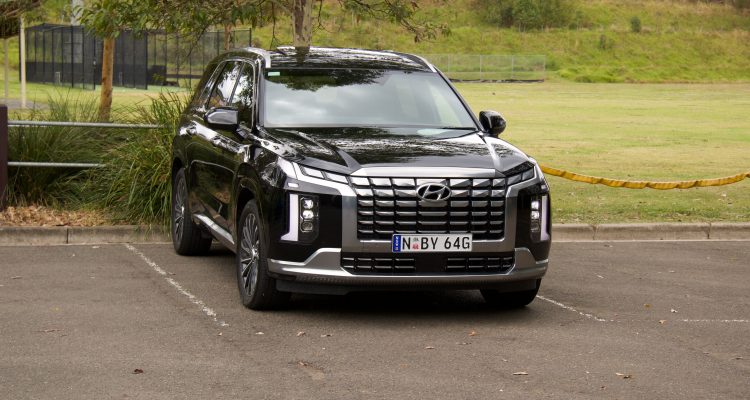
Leave a Reply